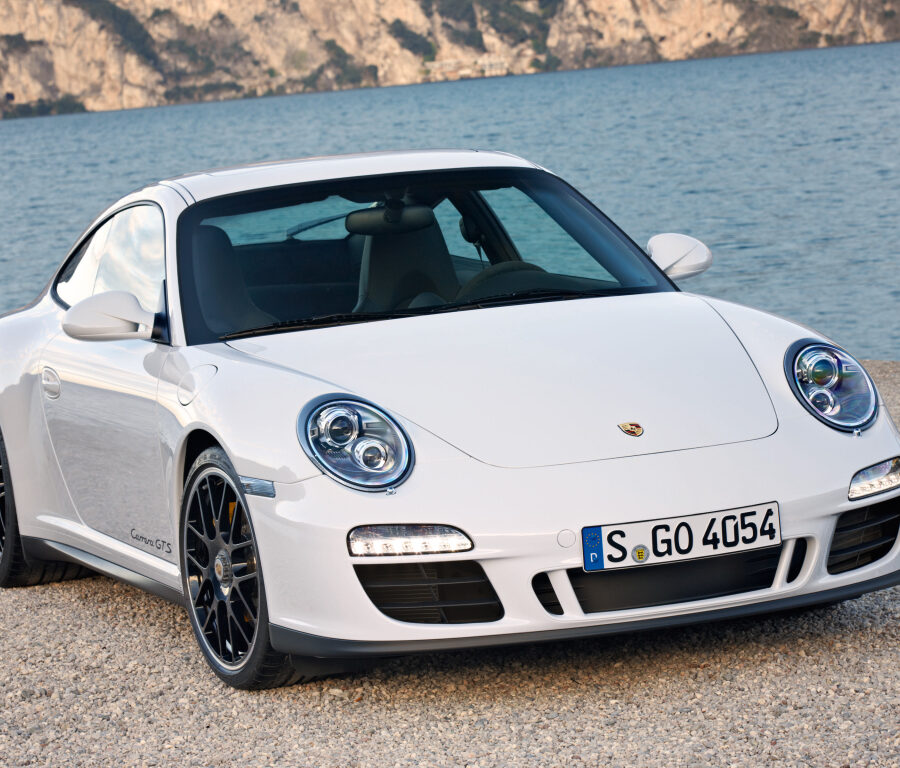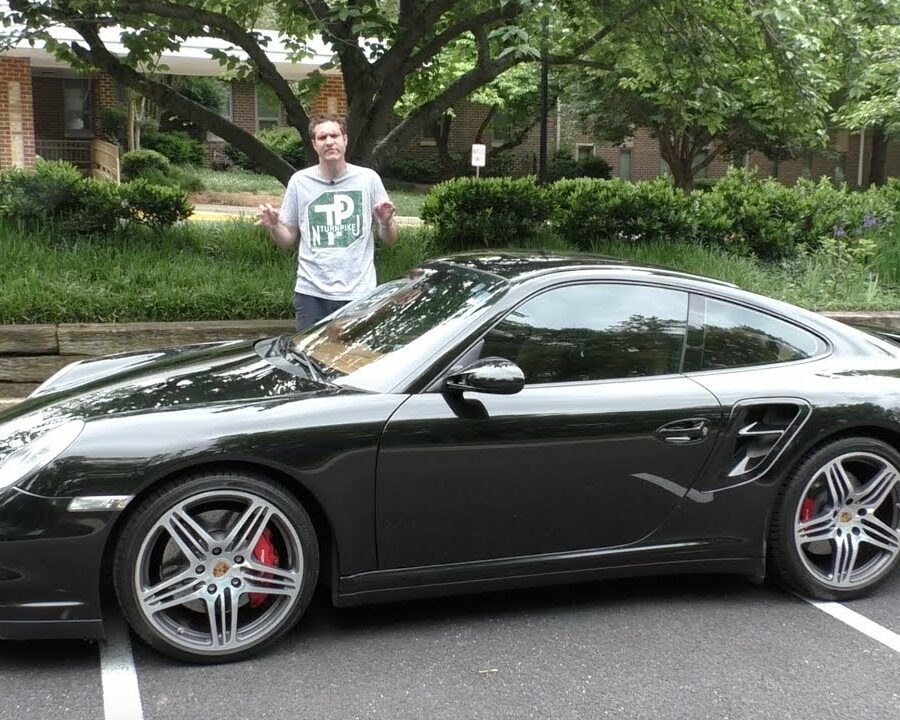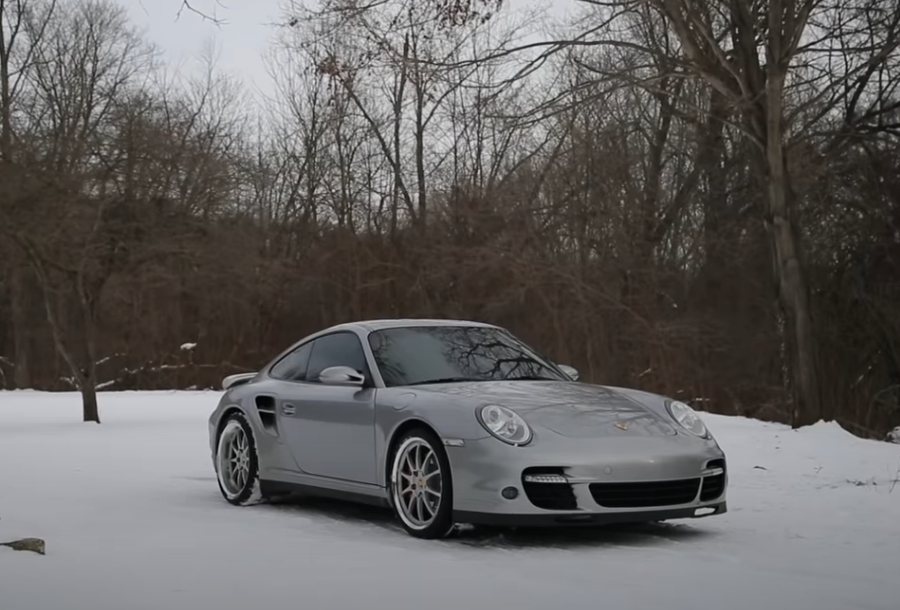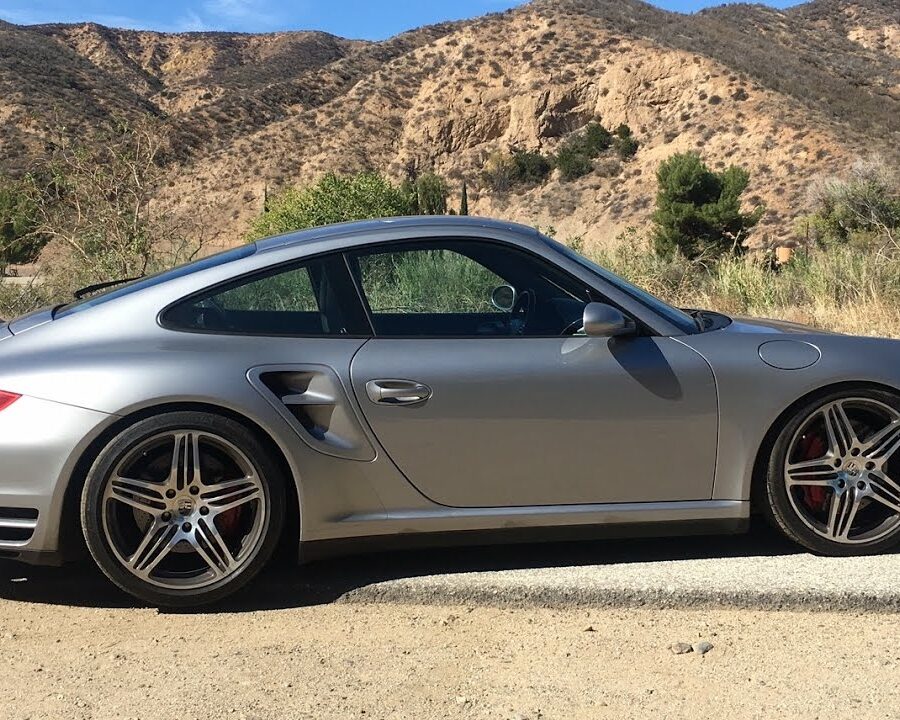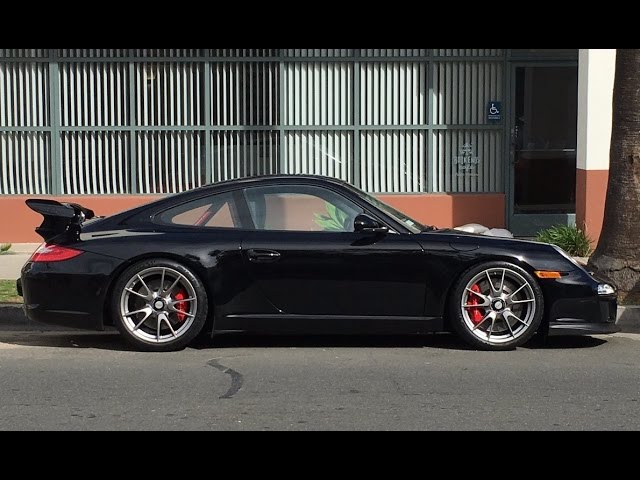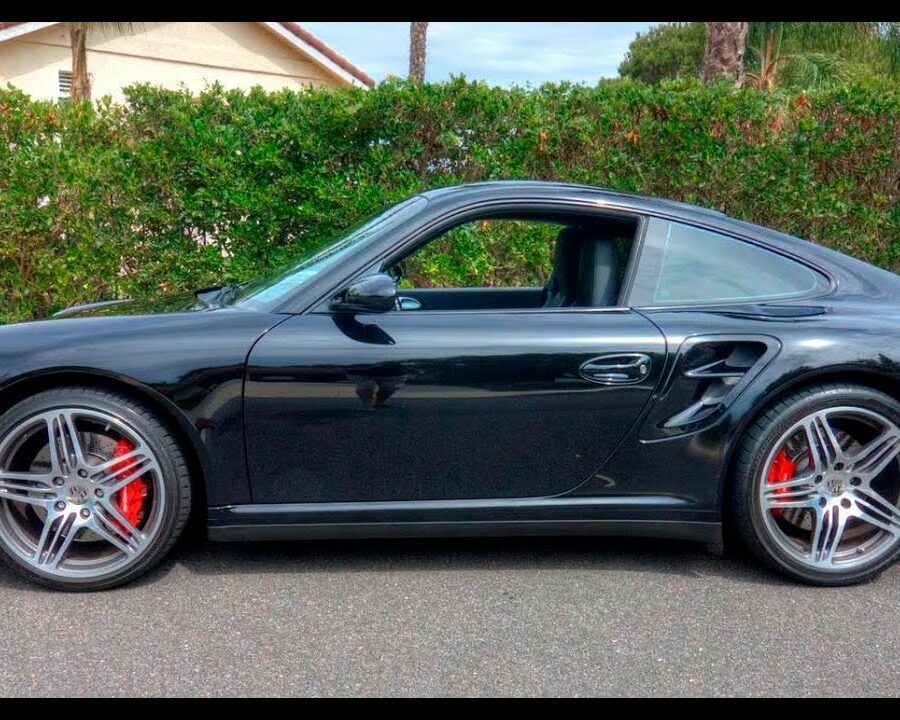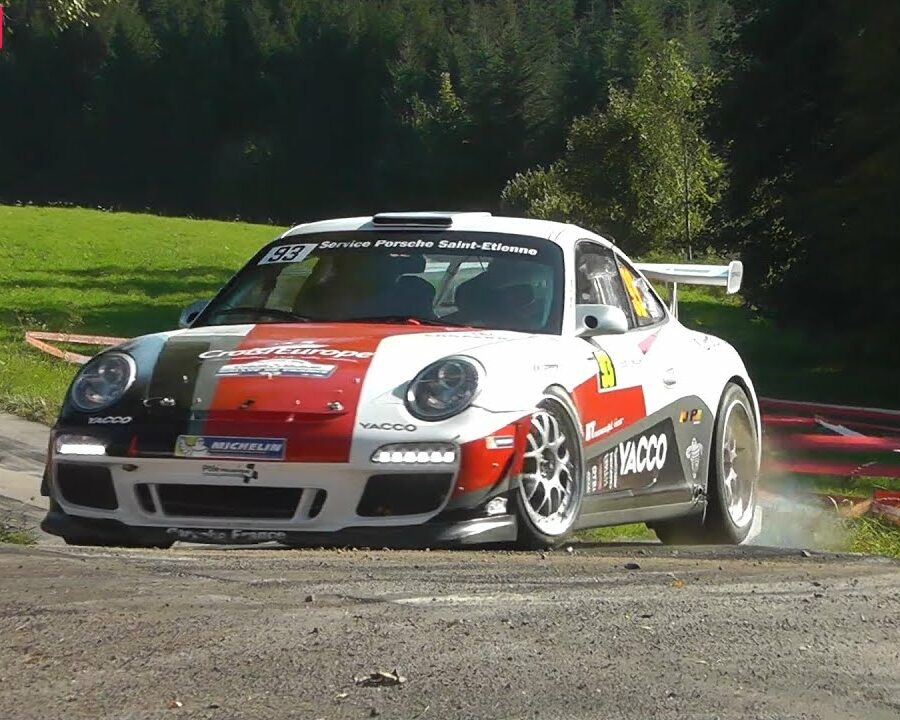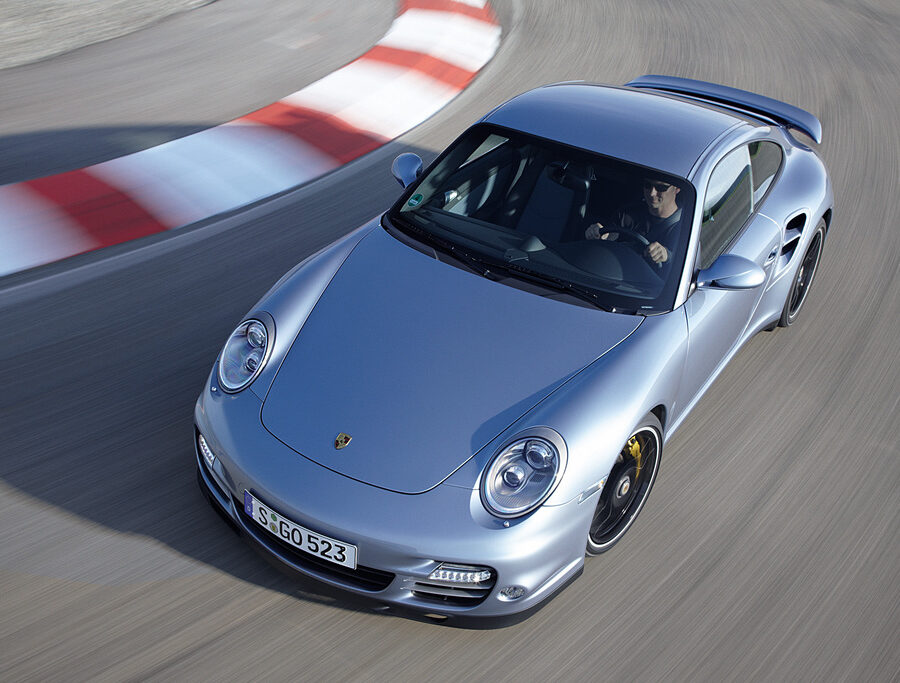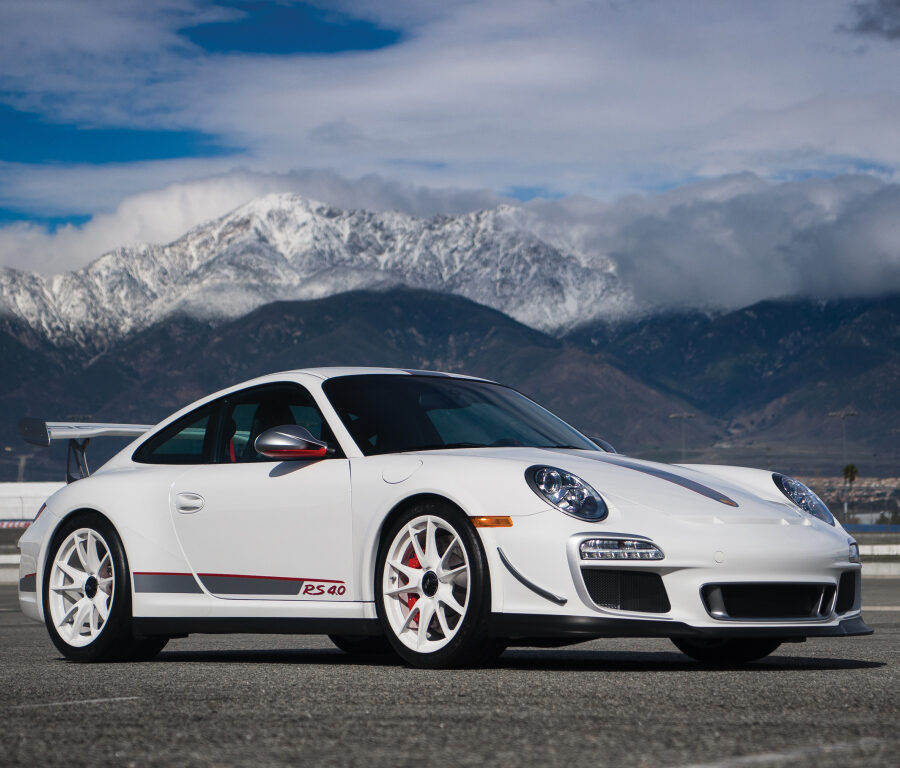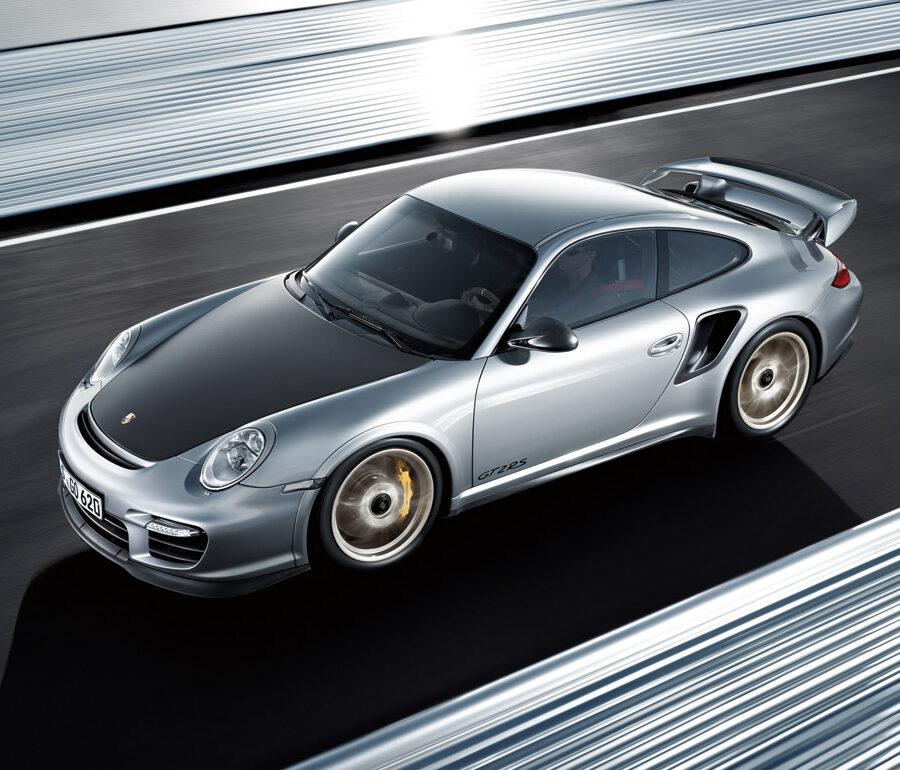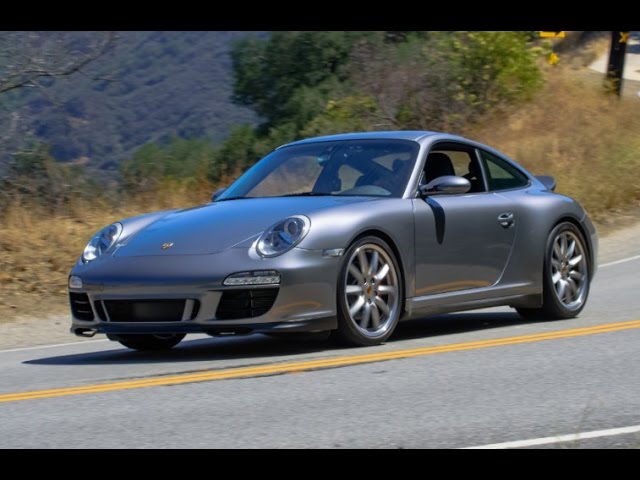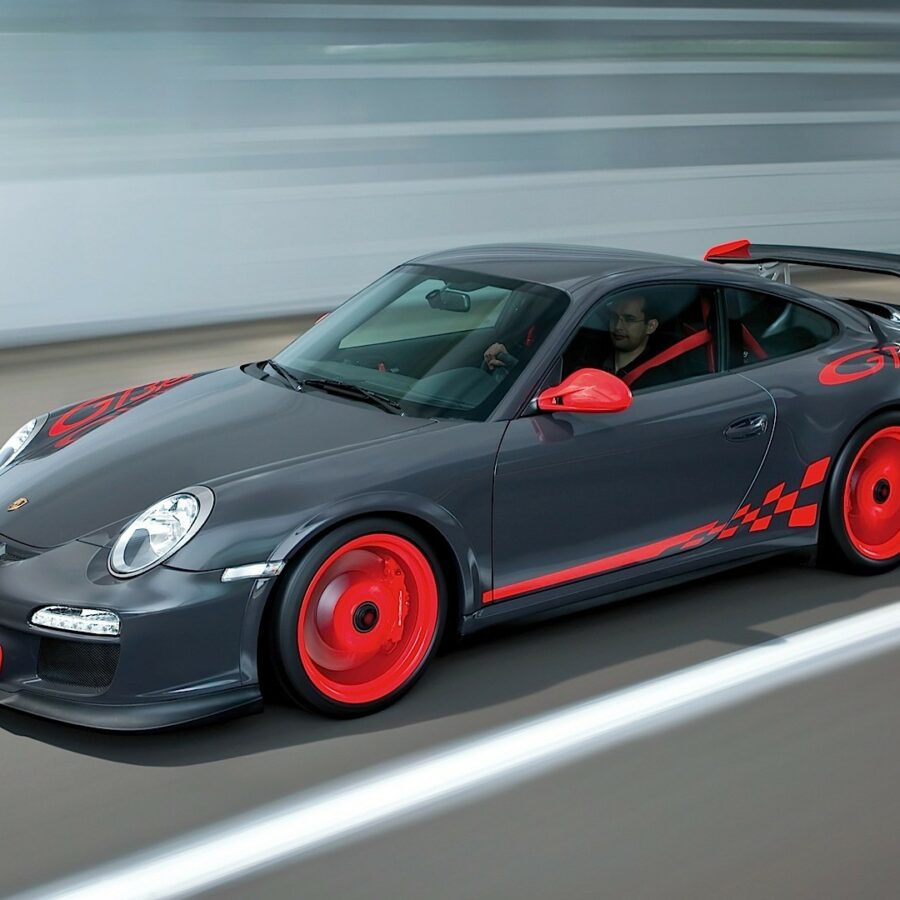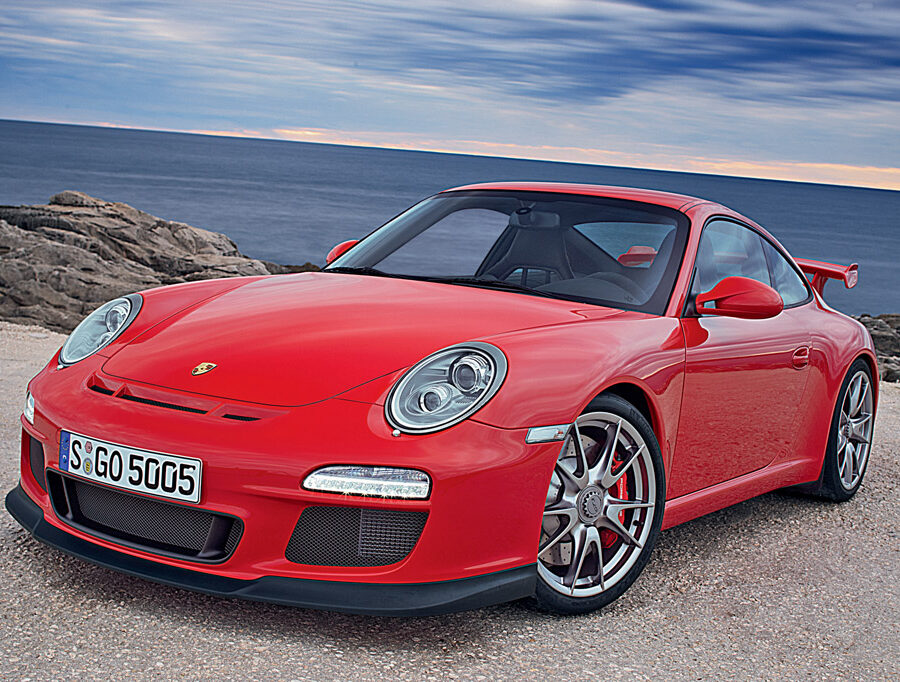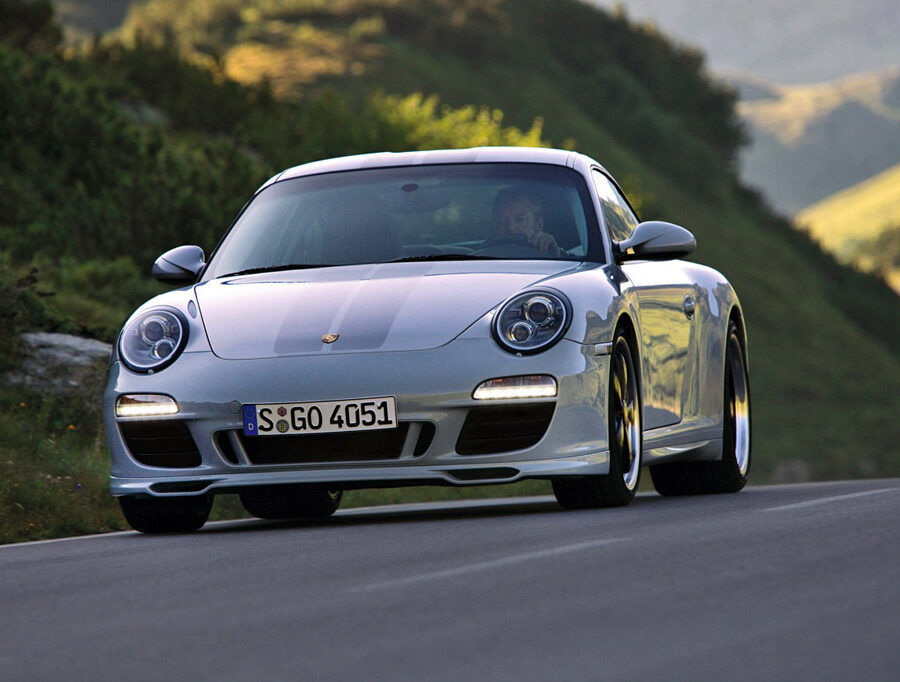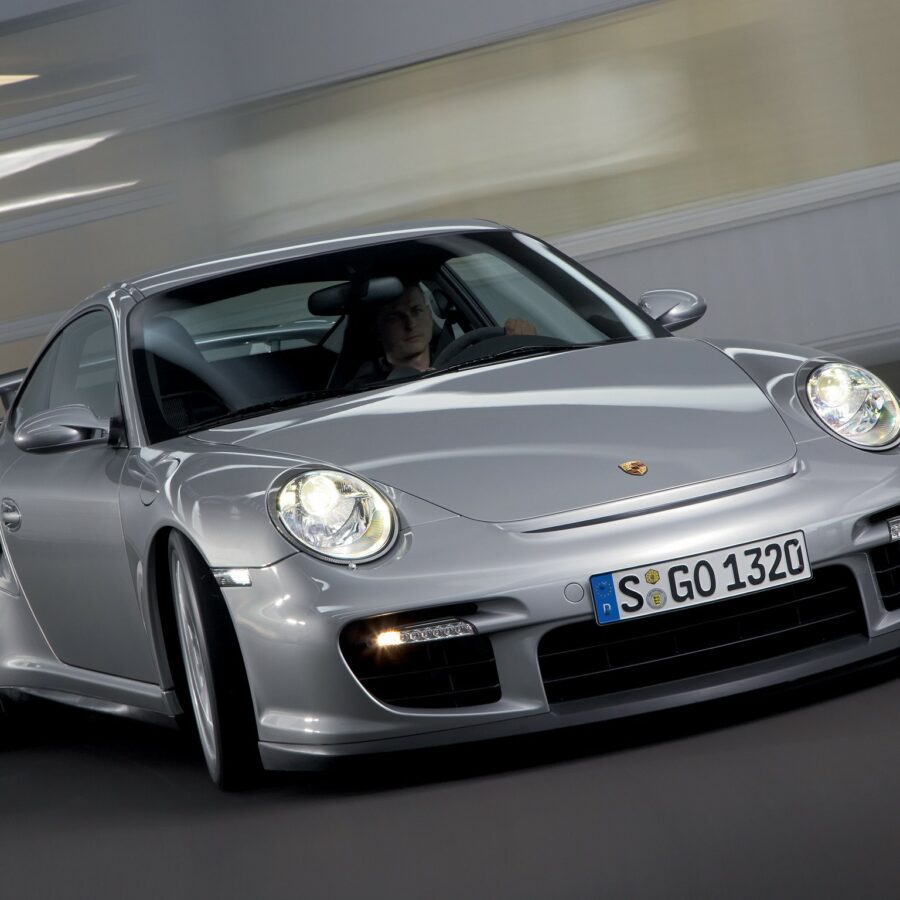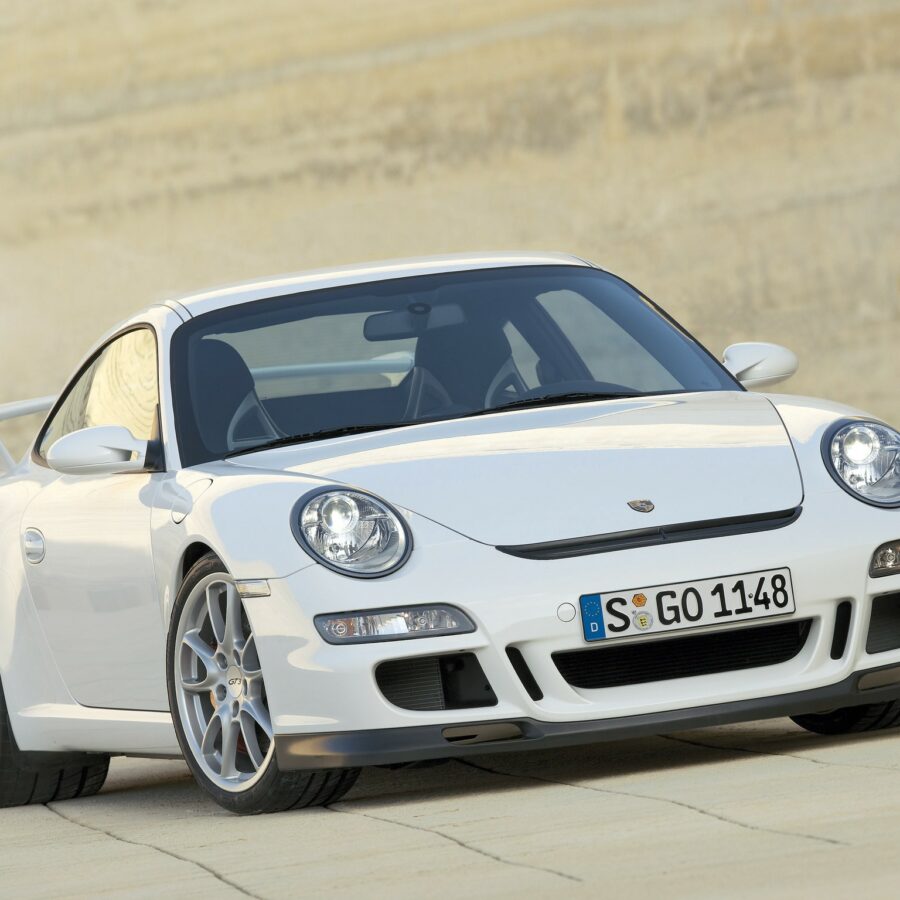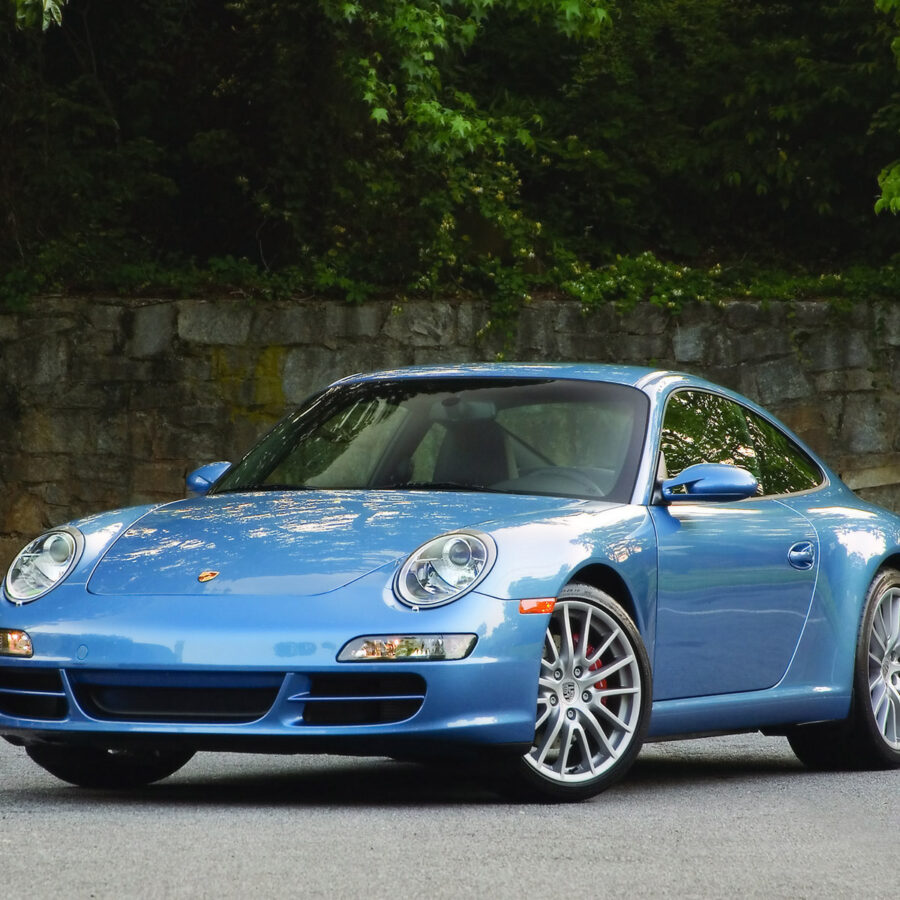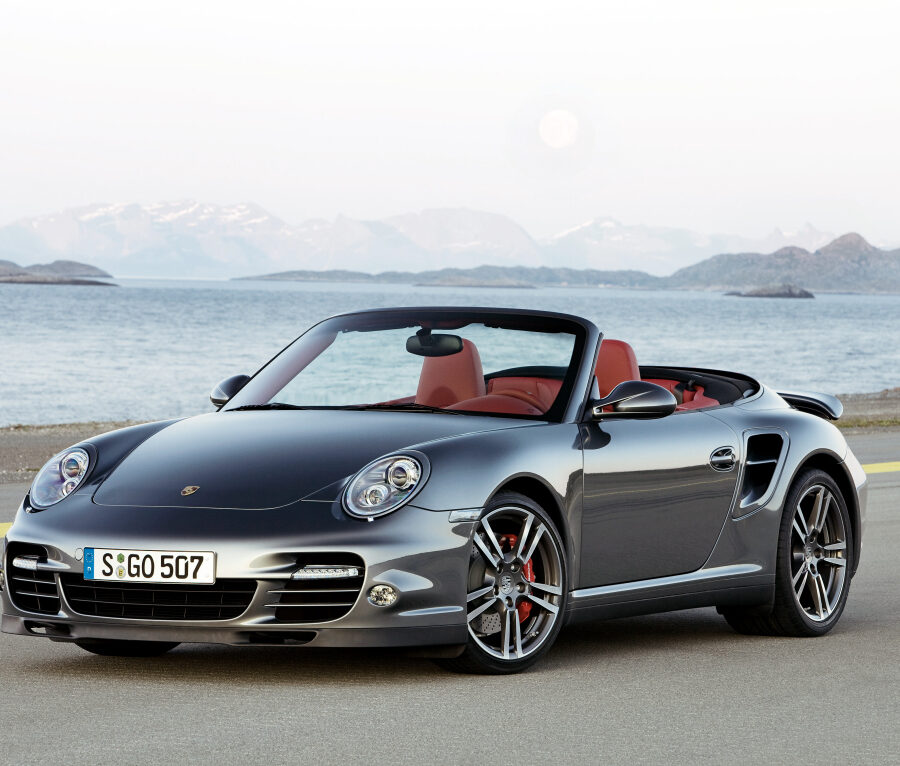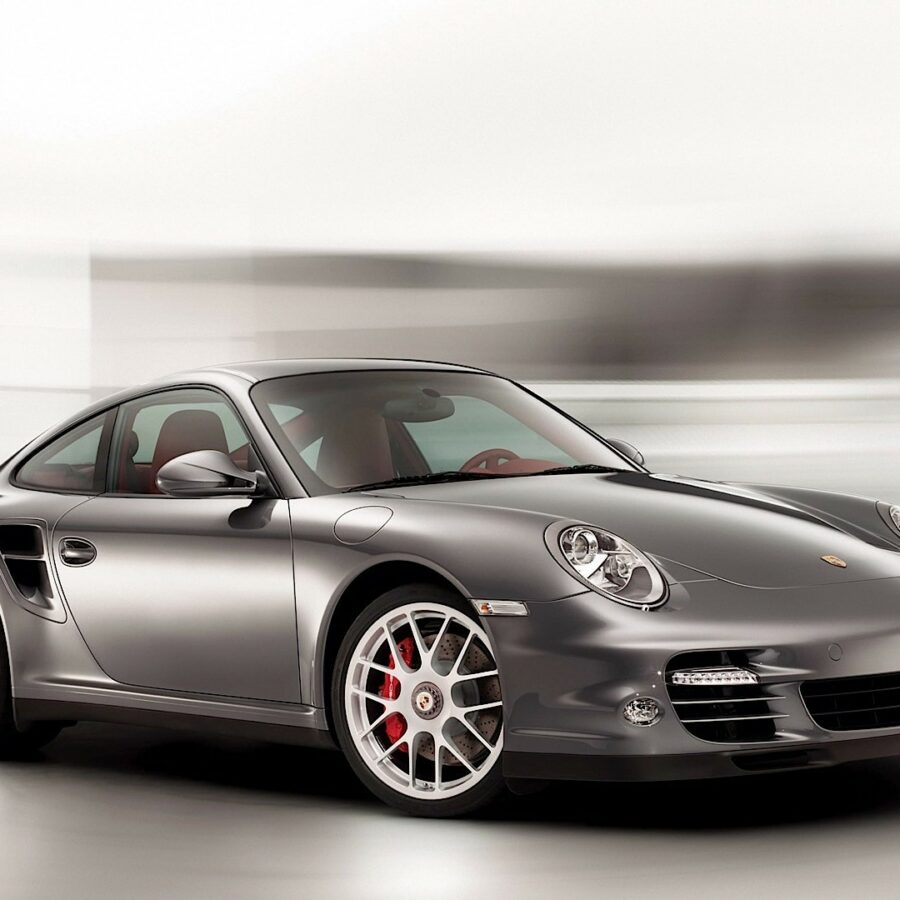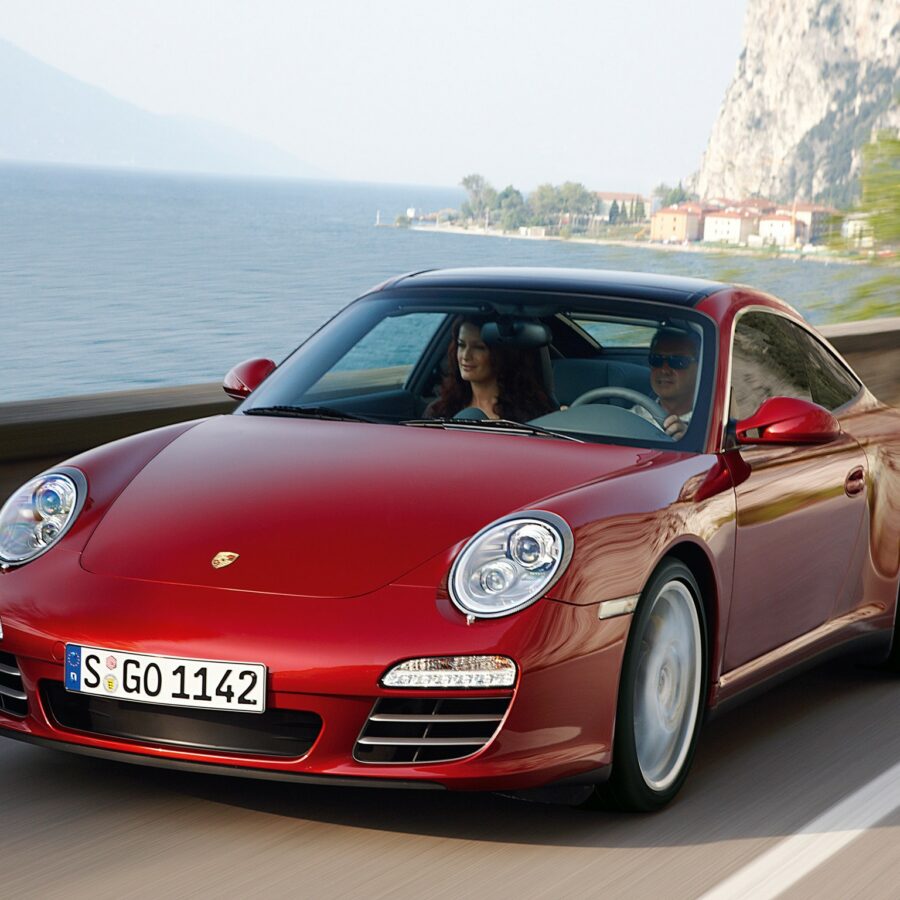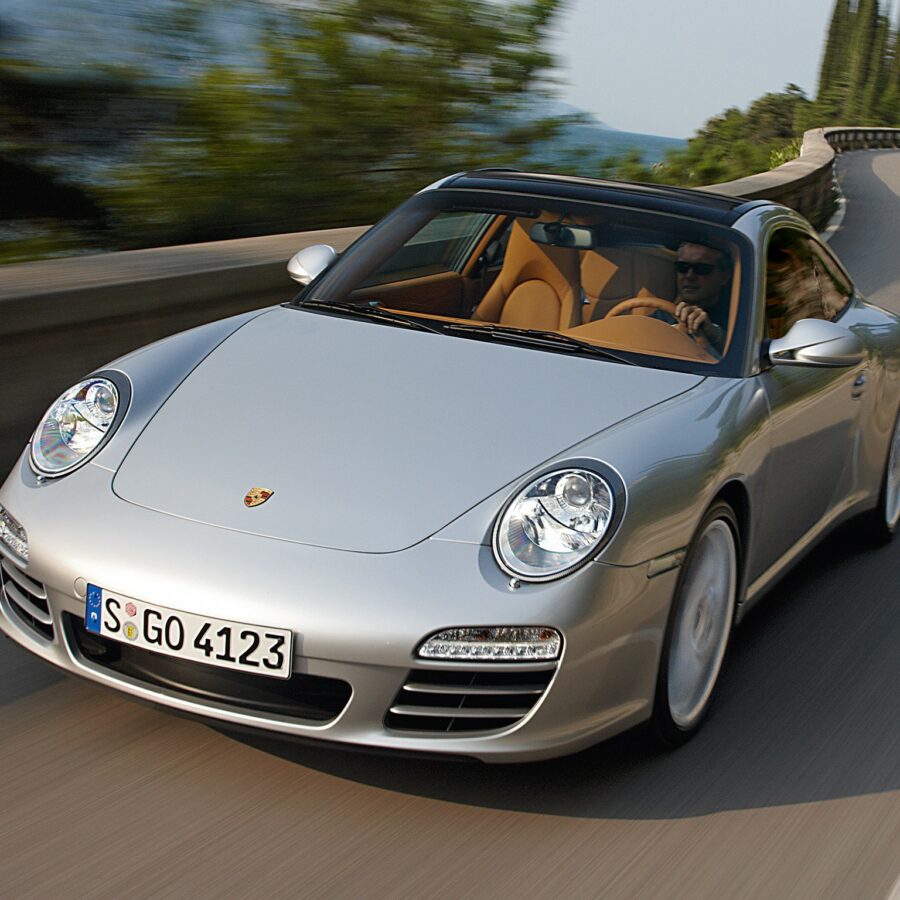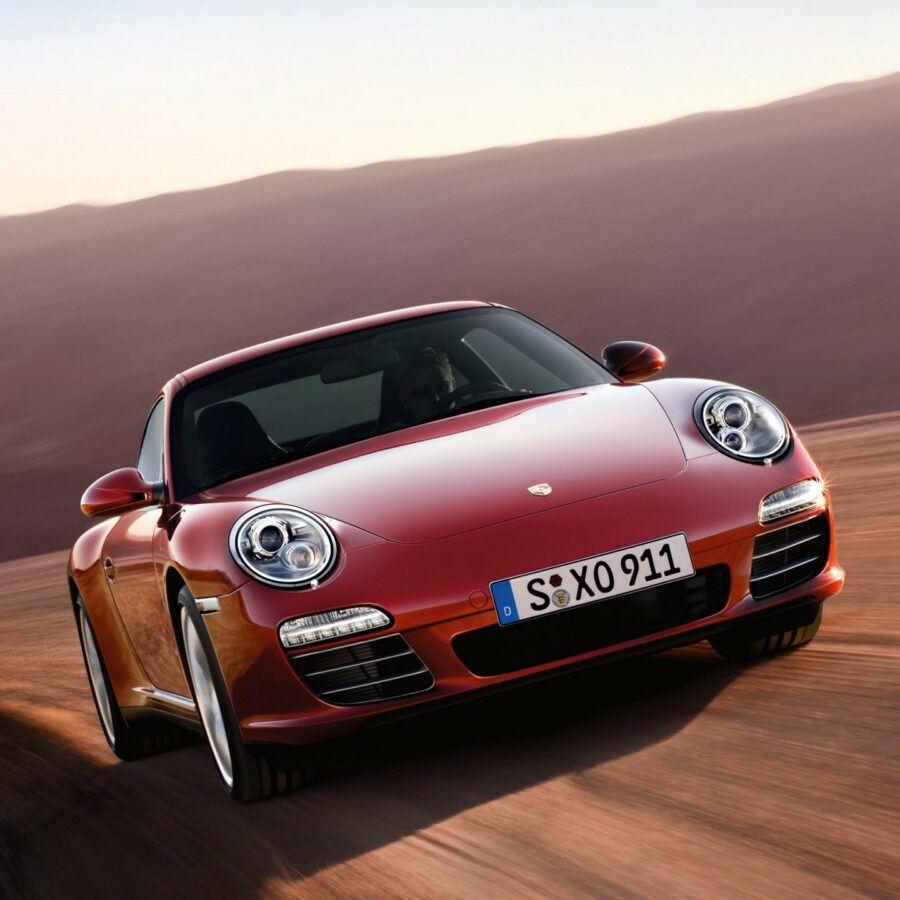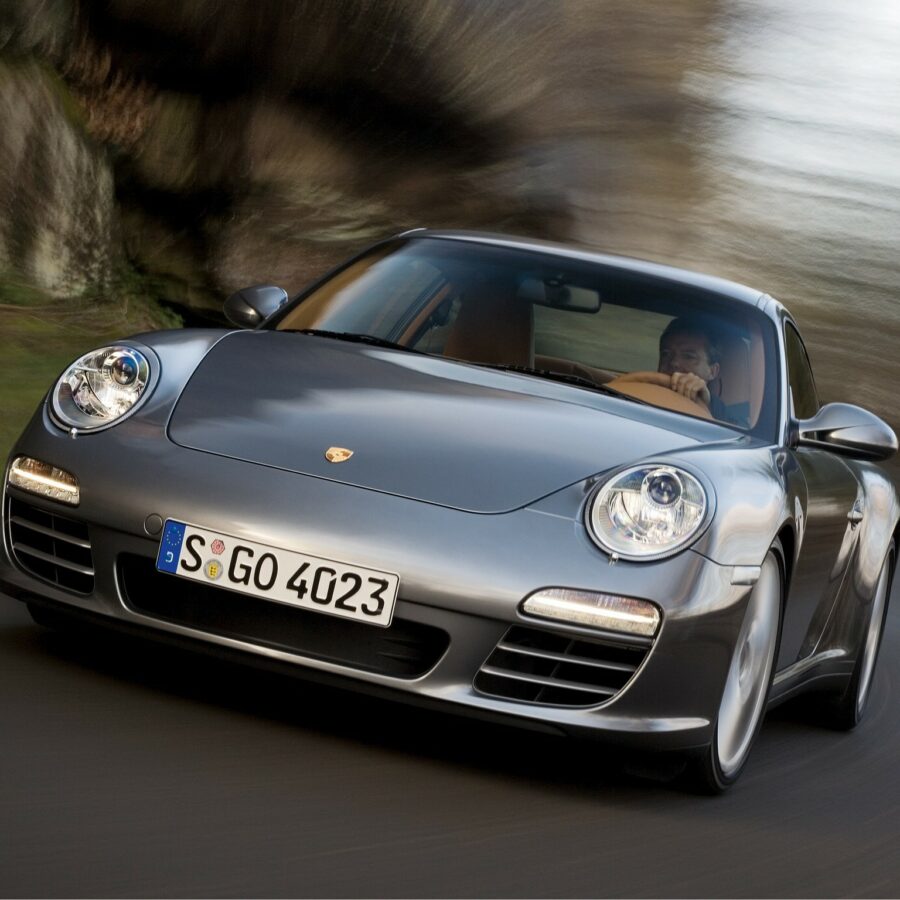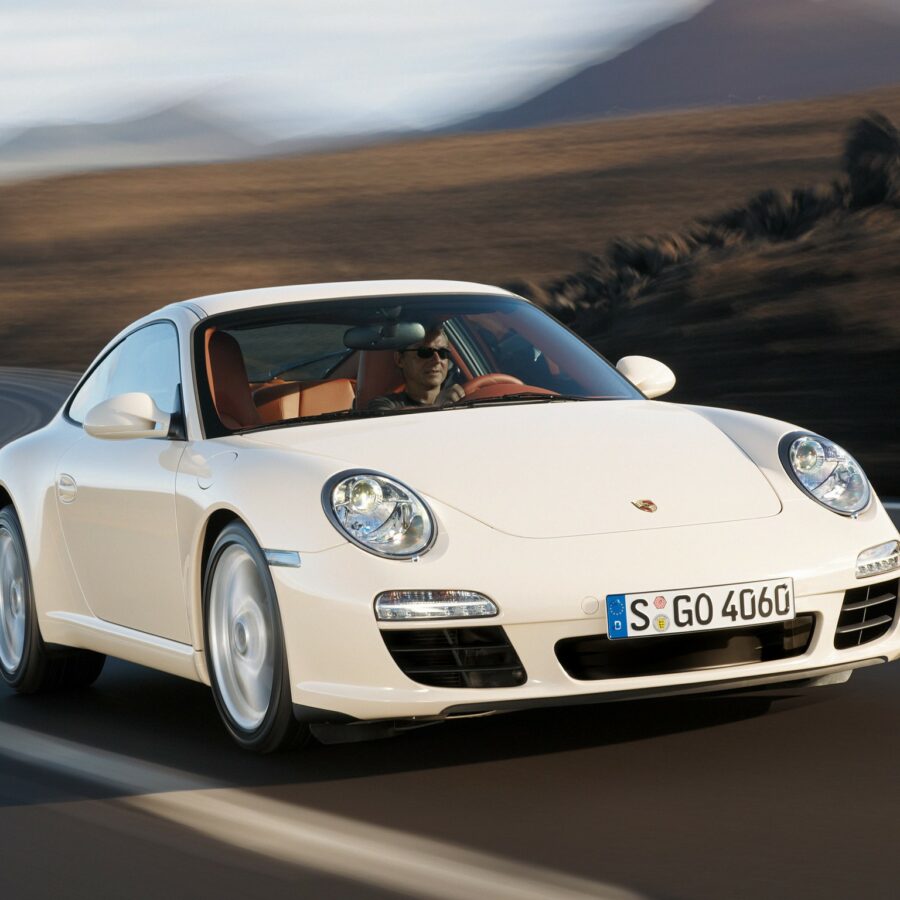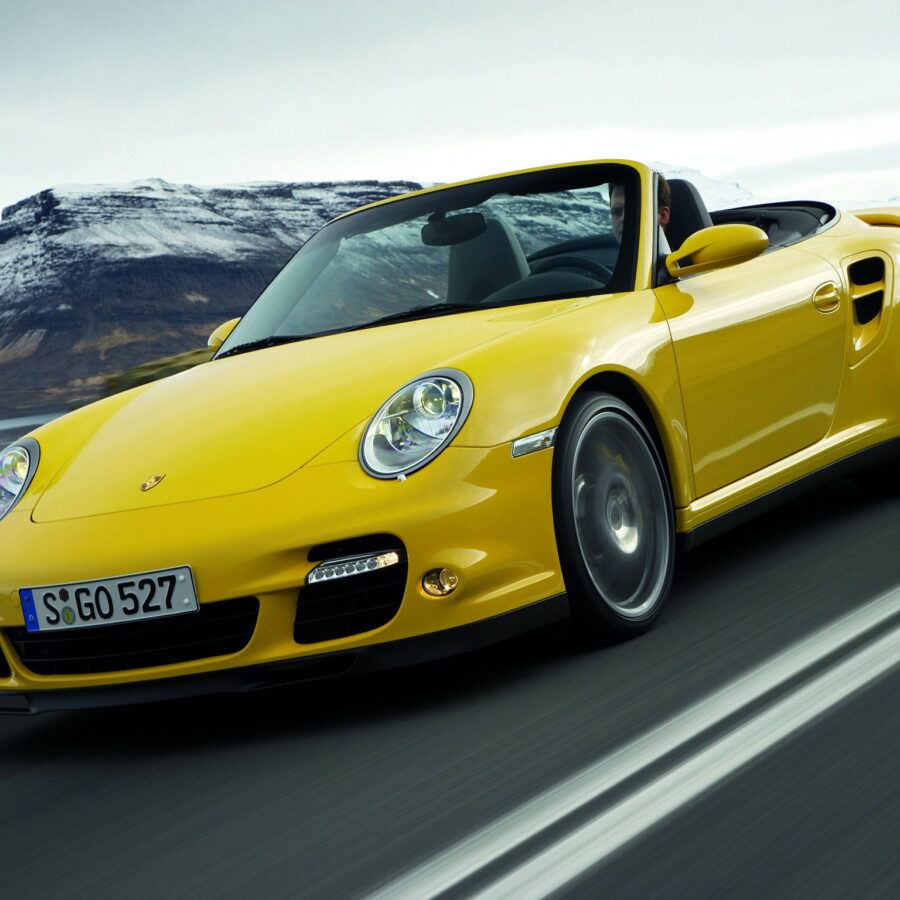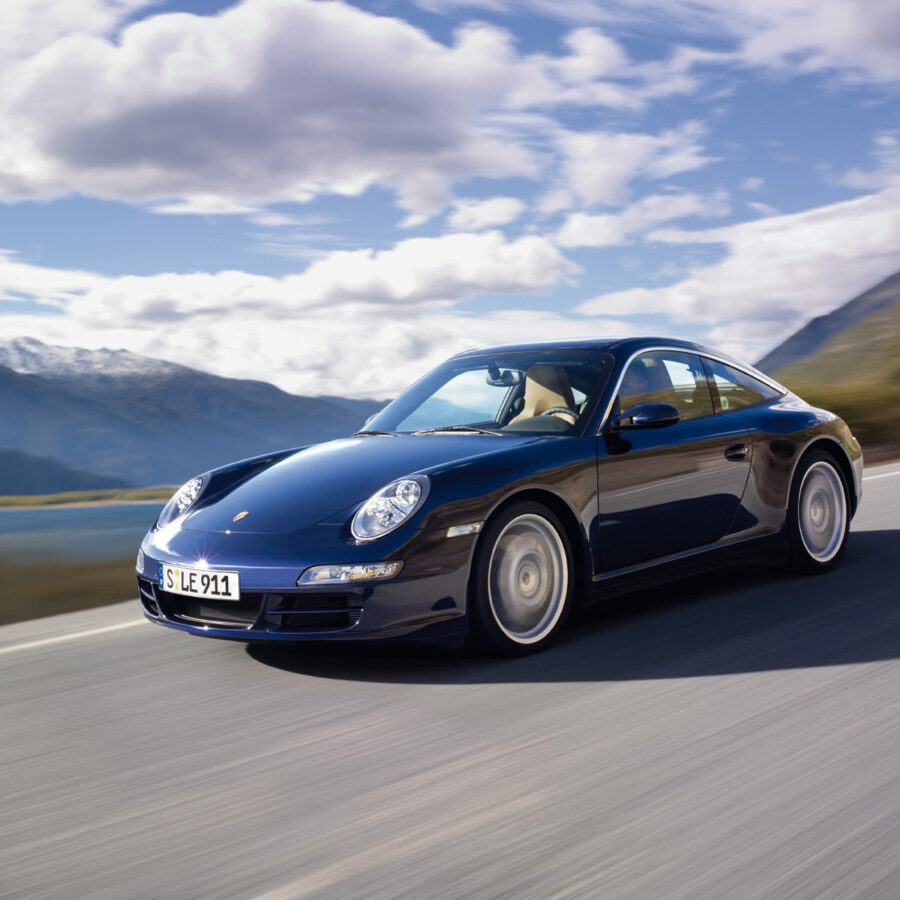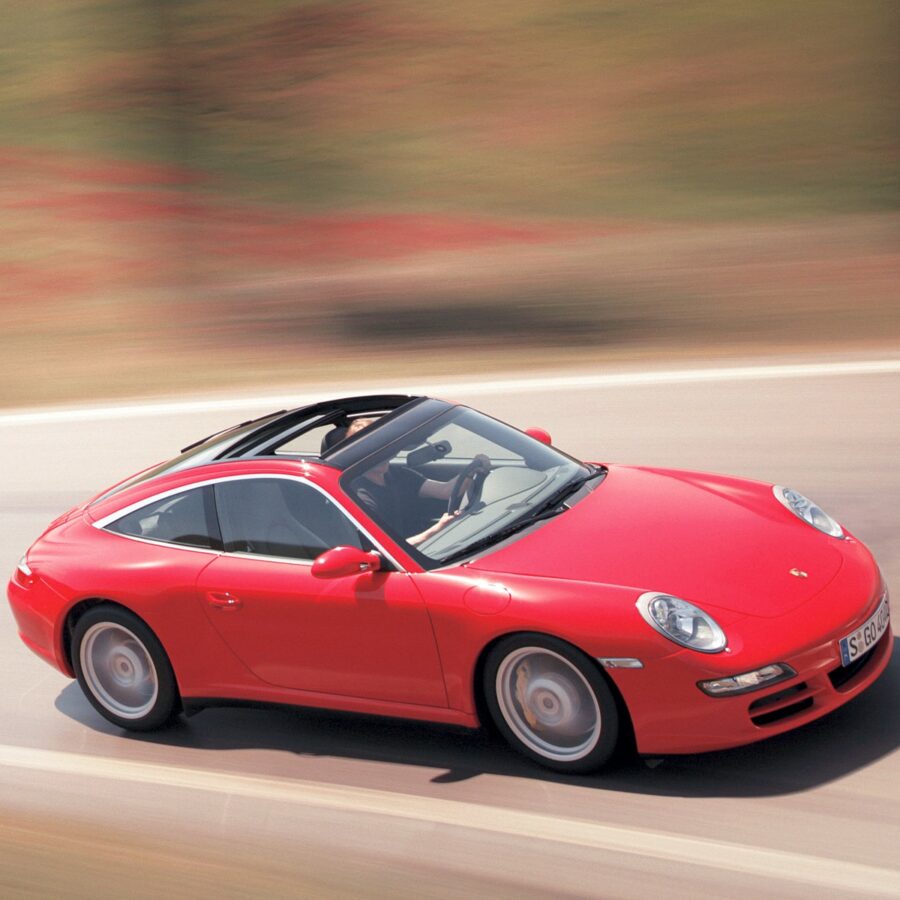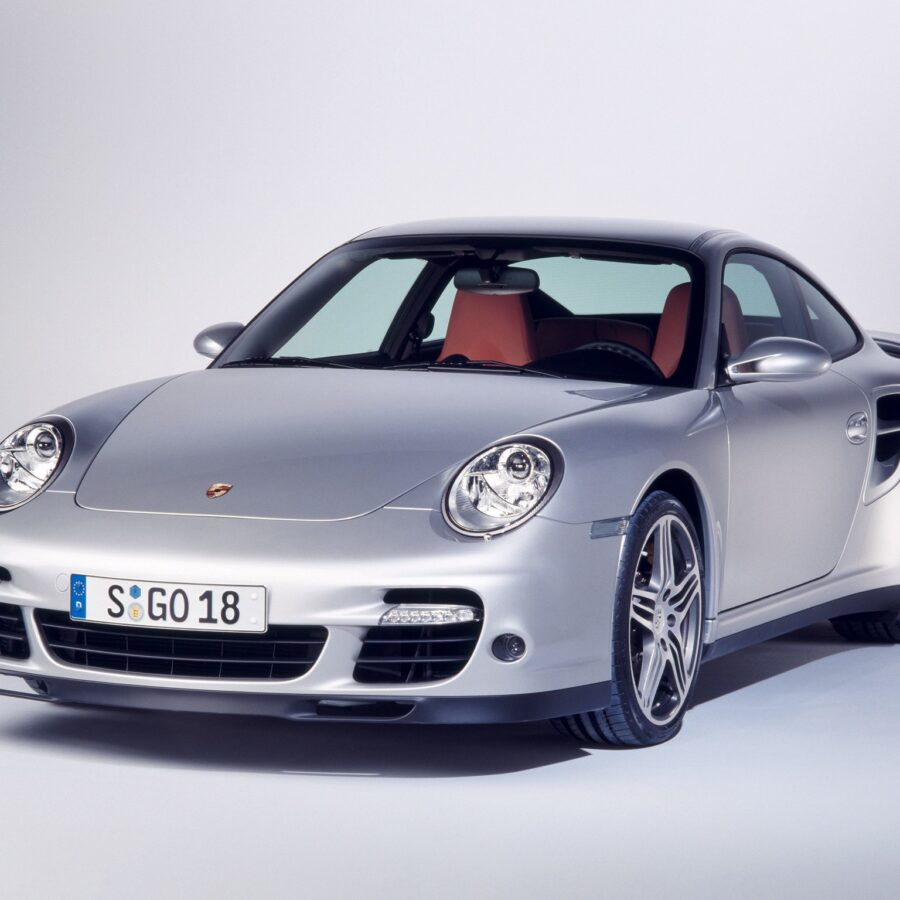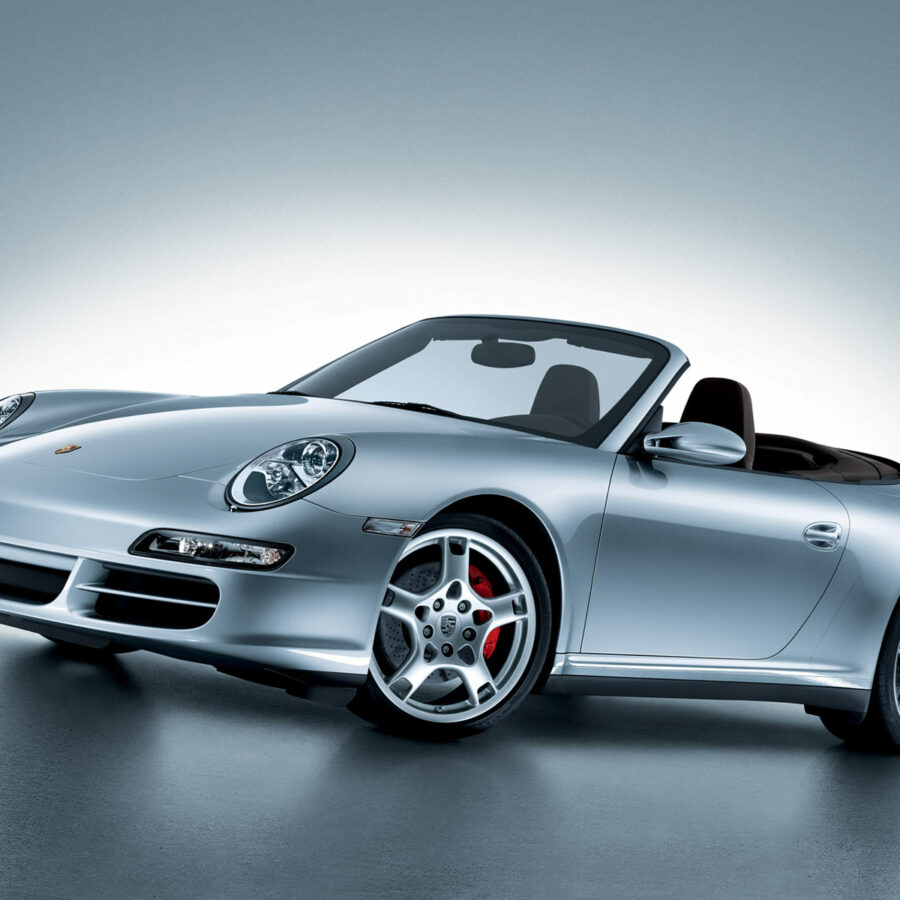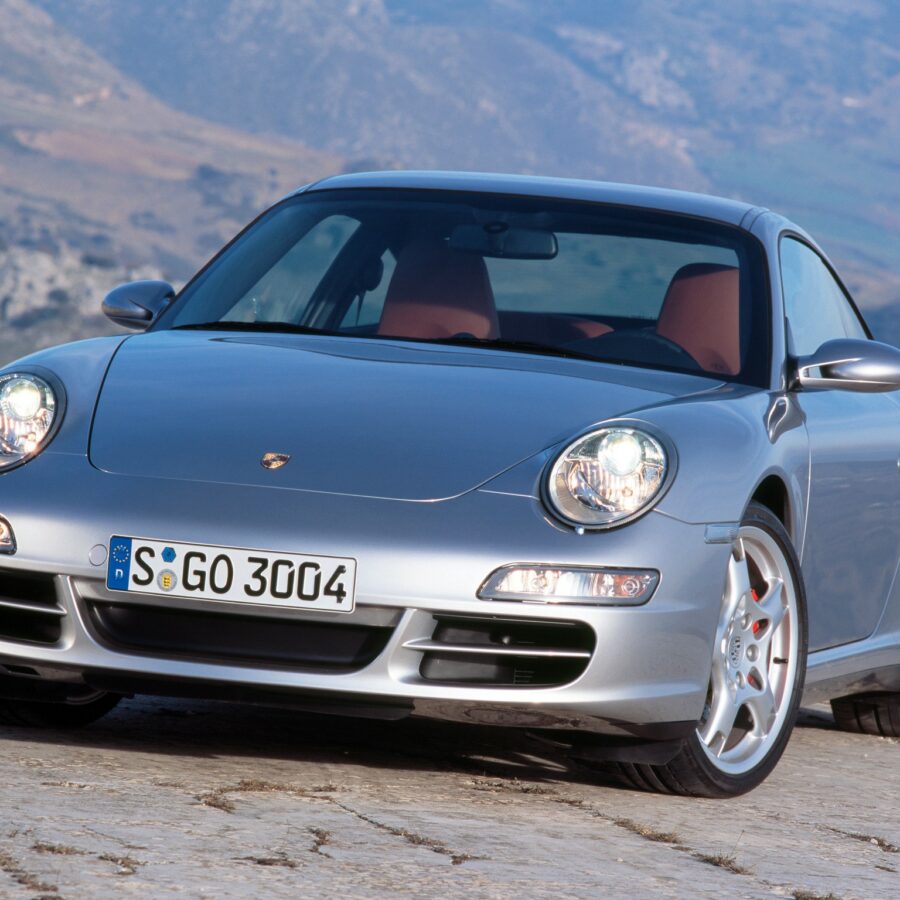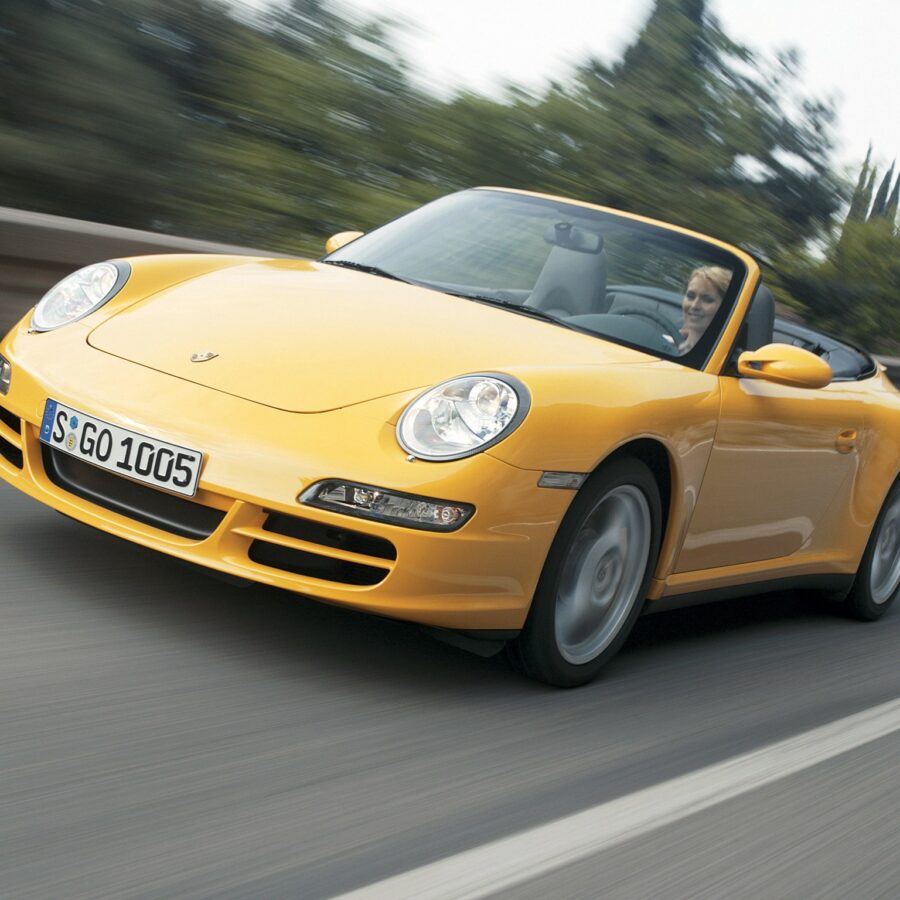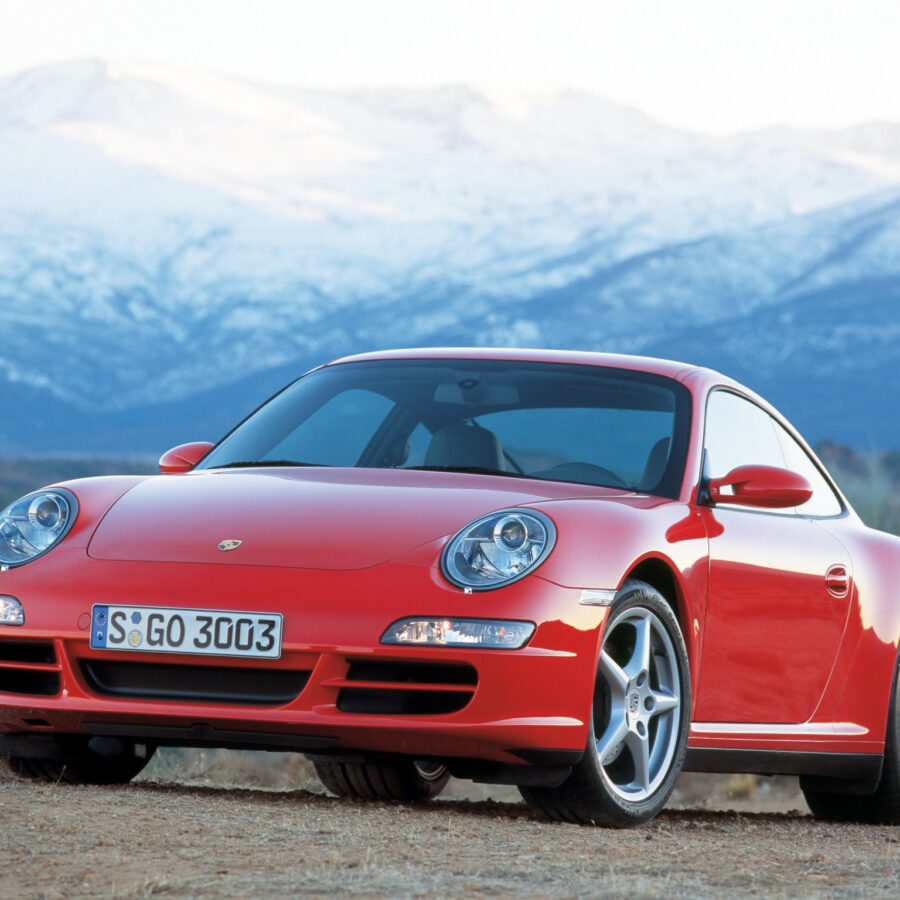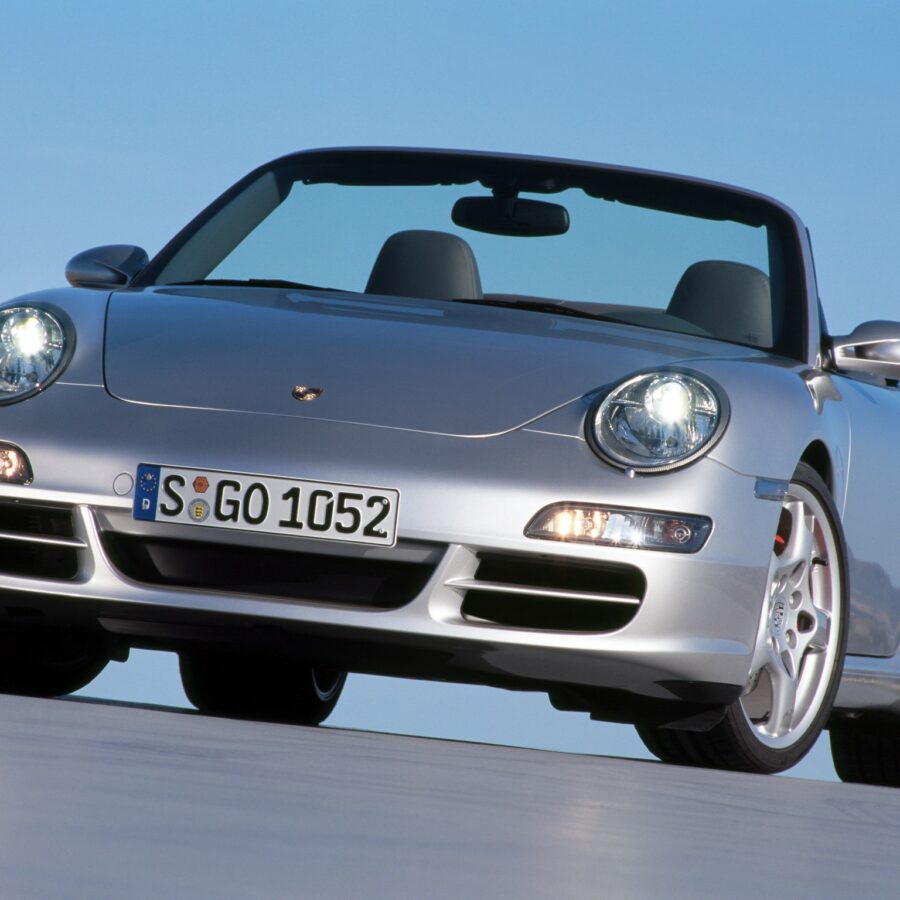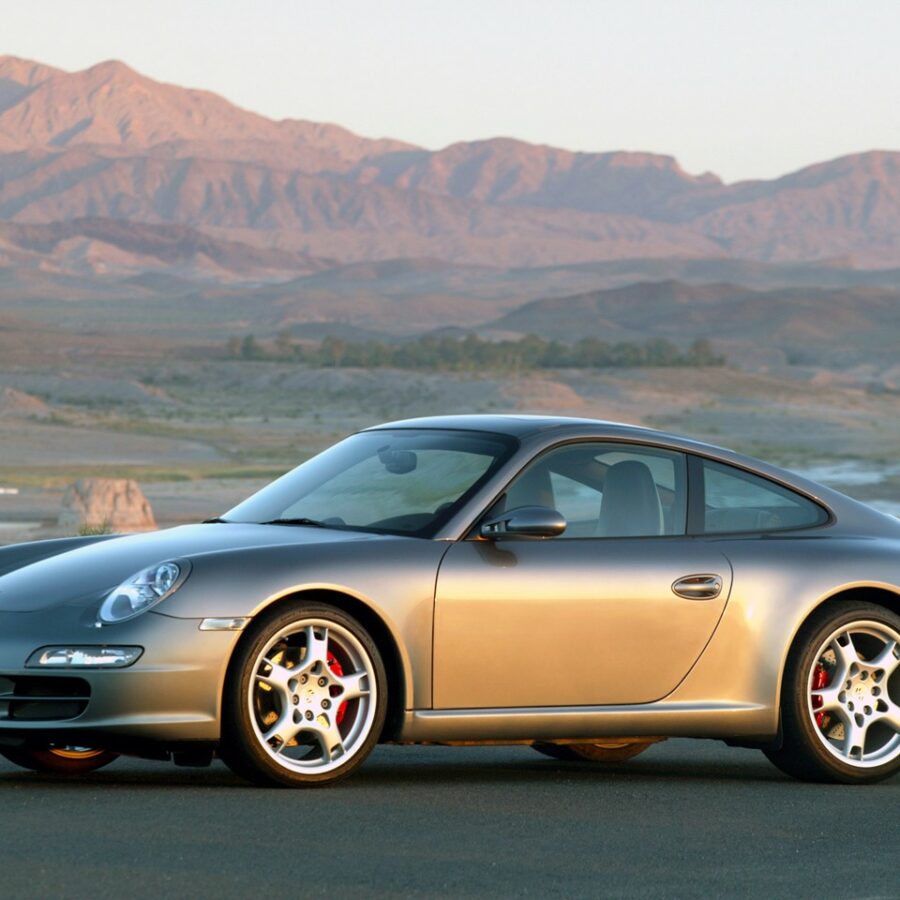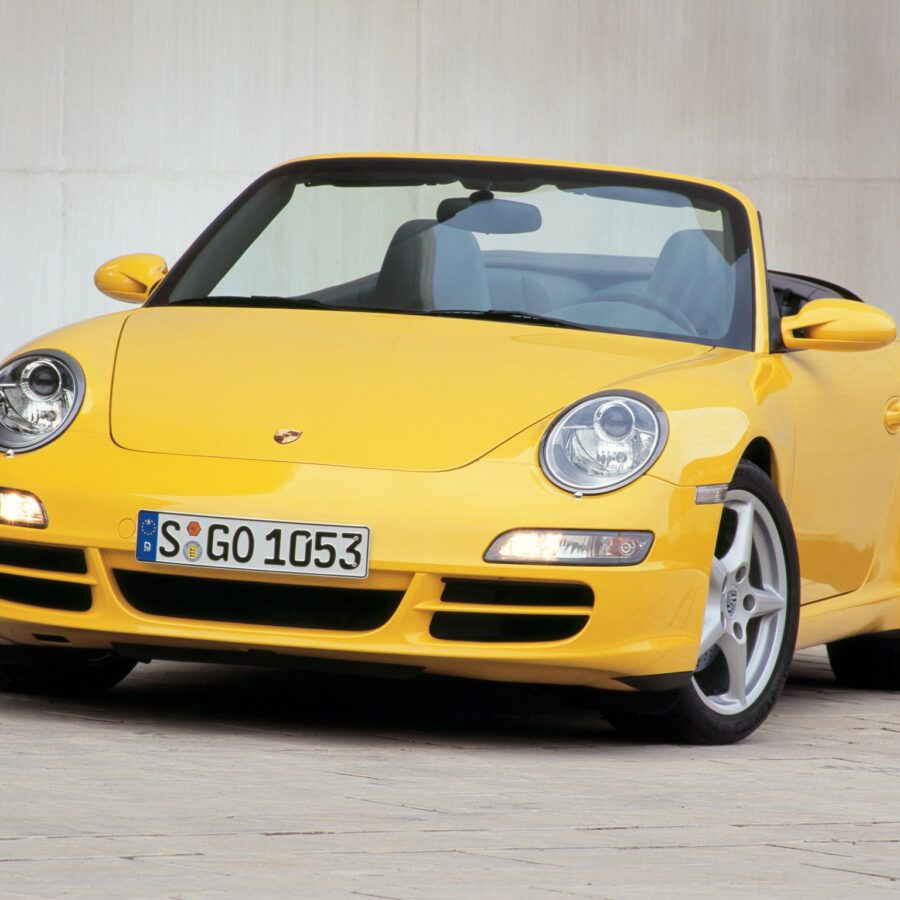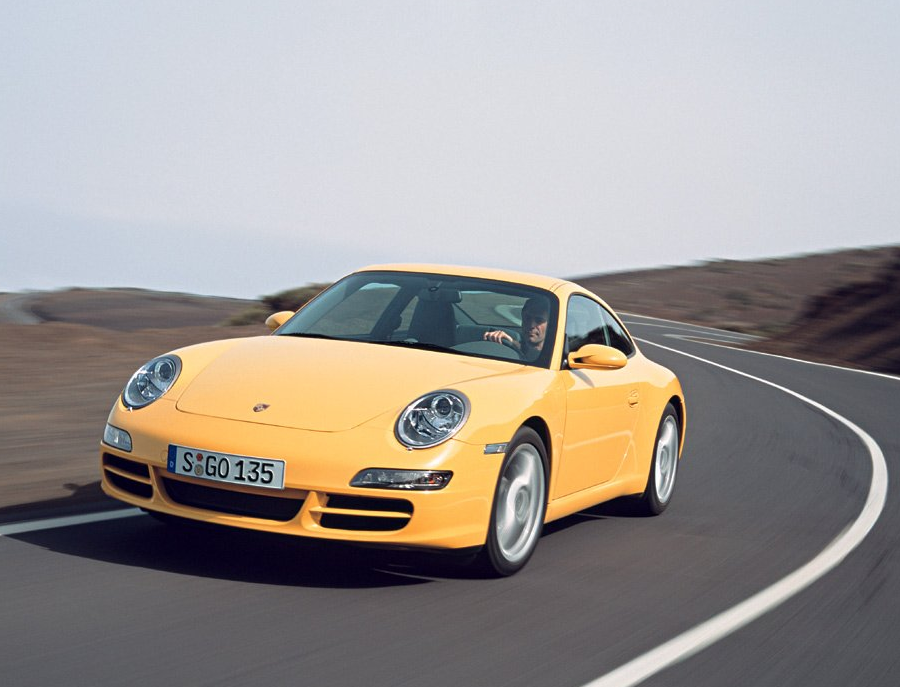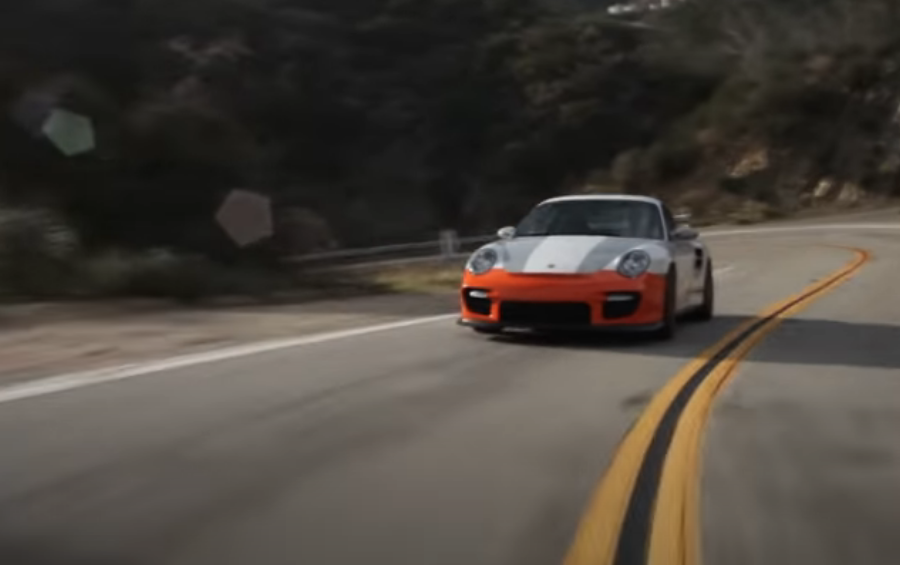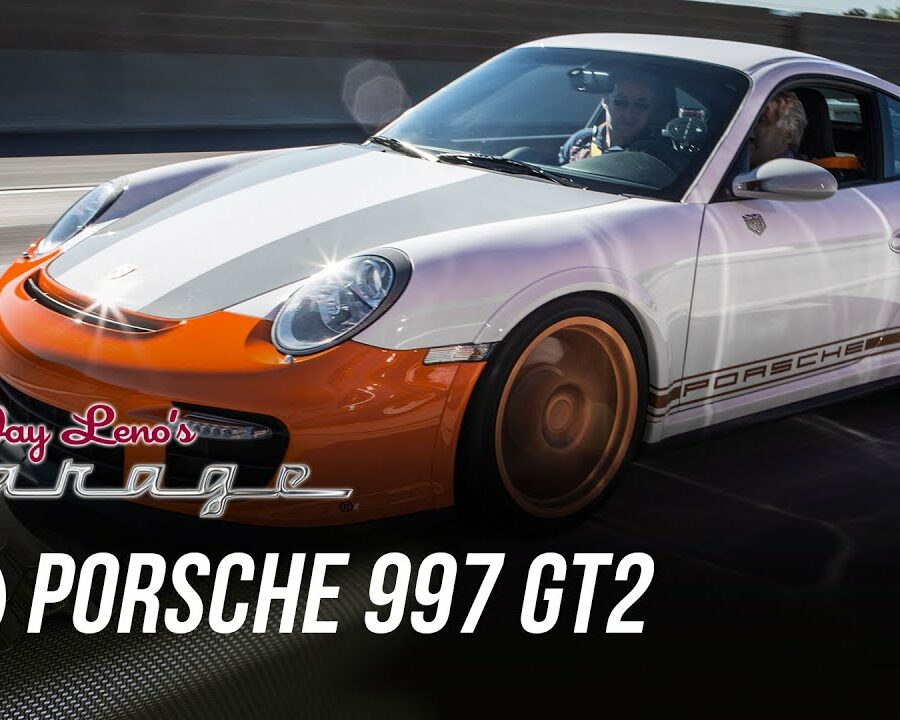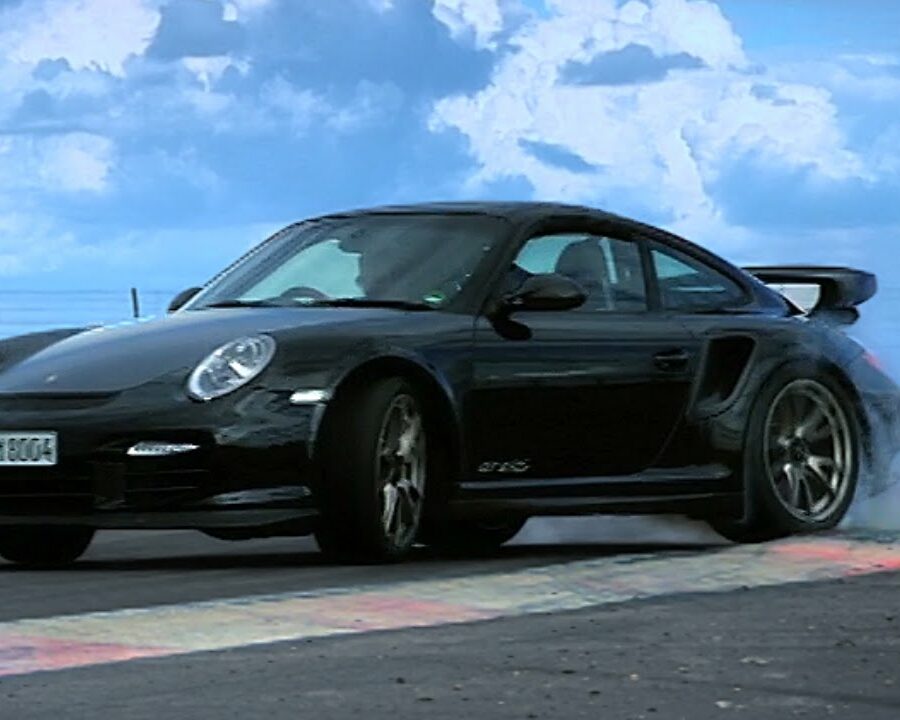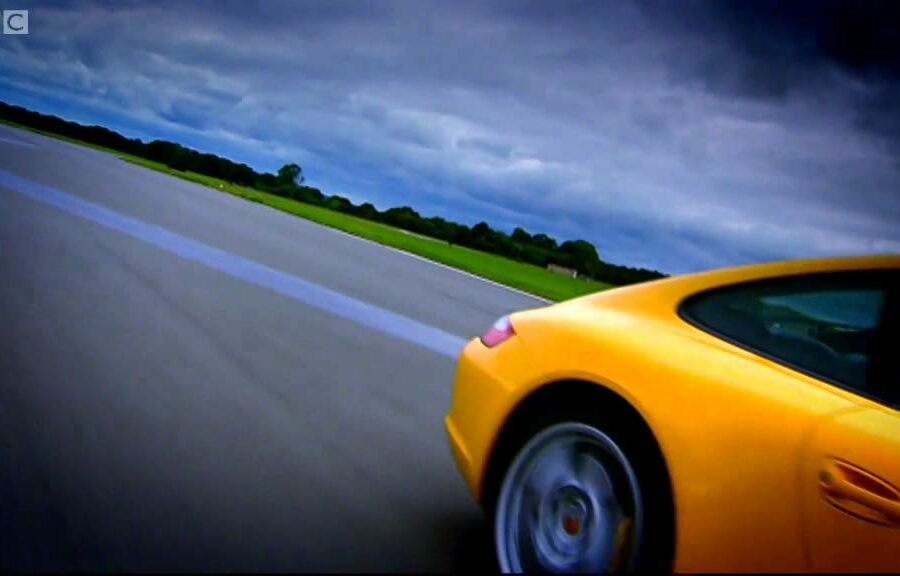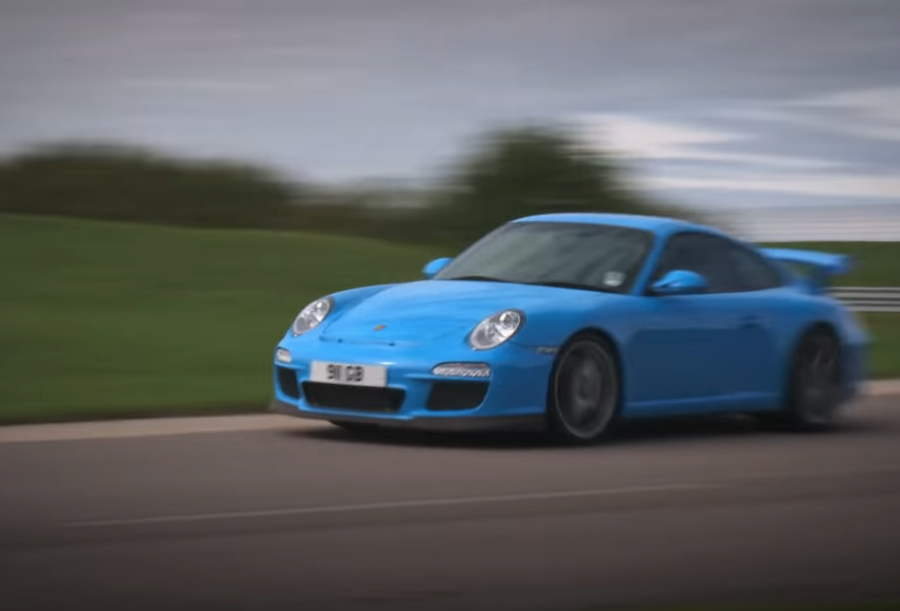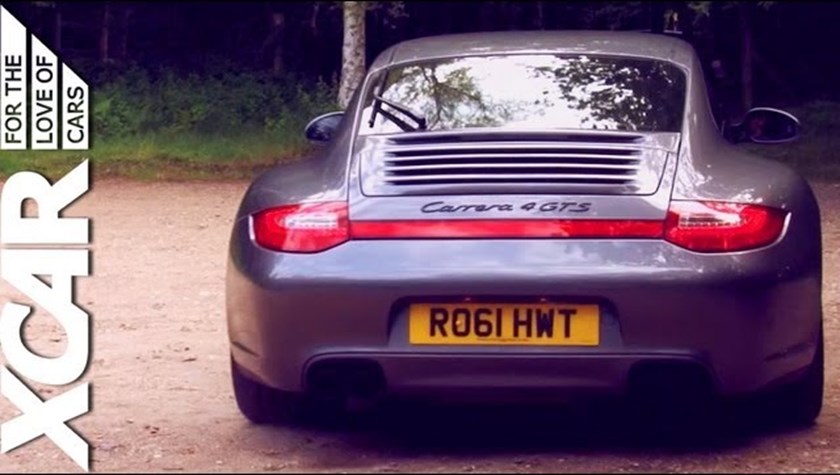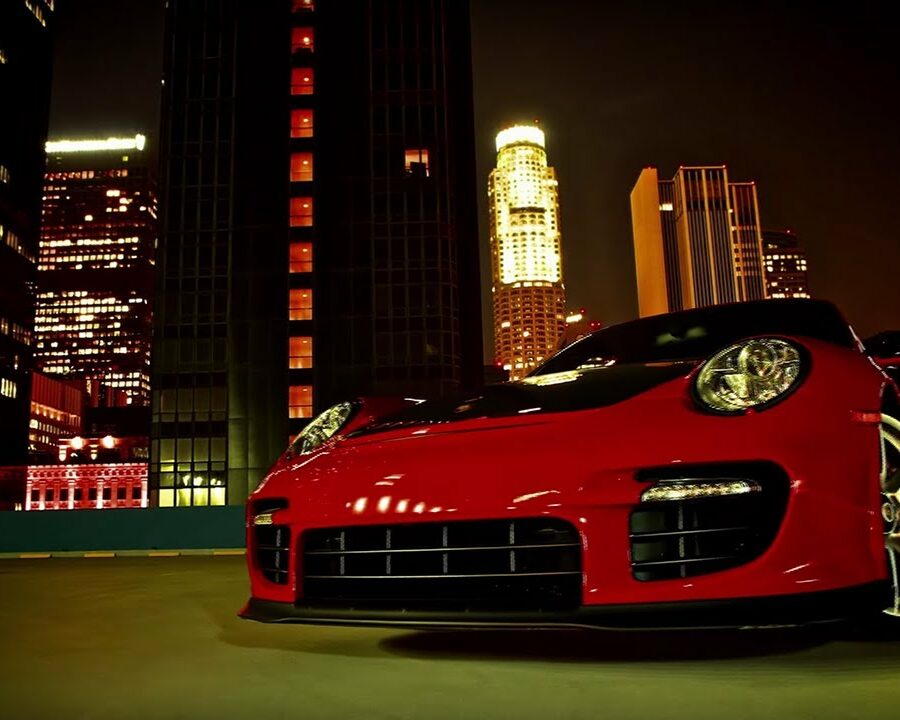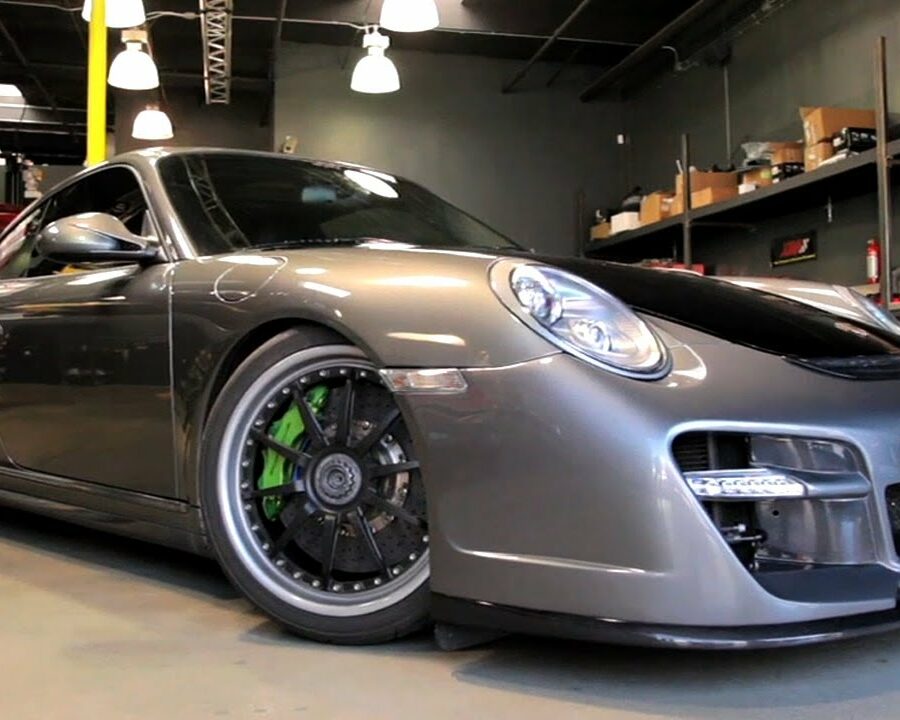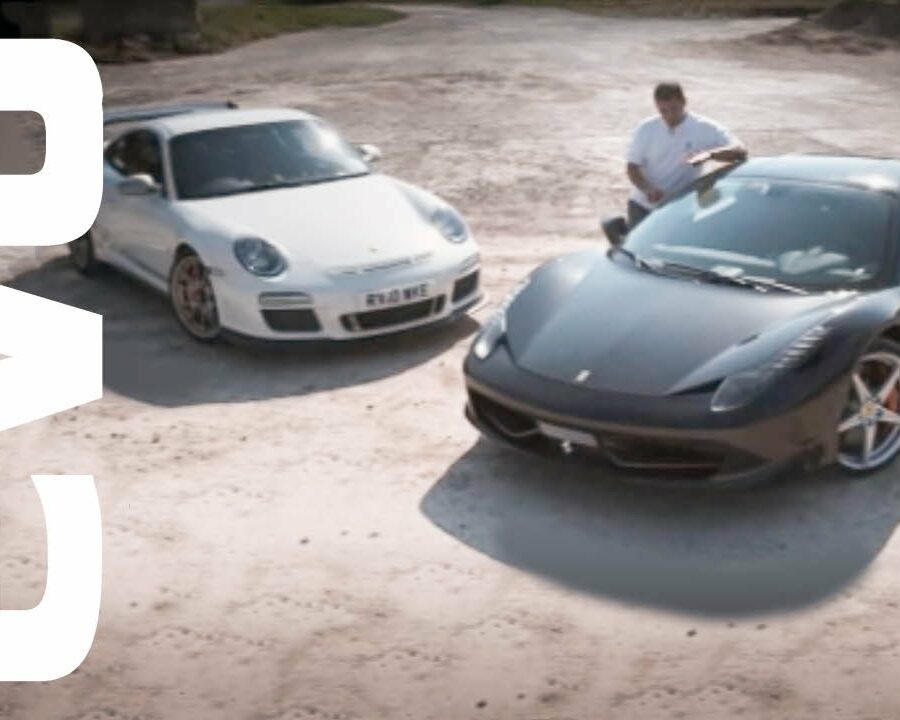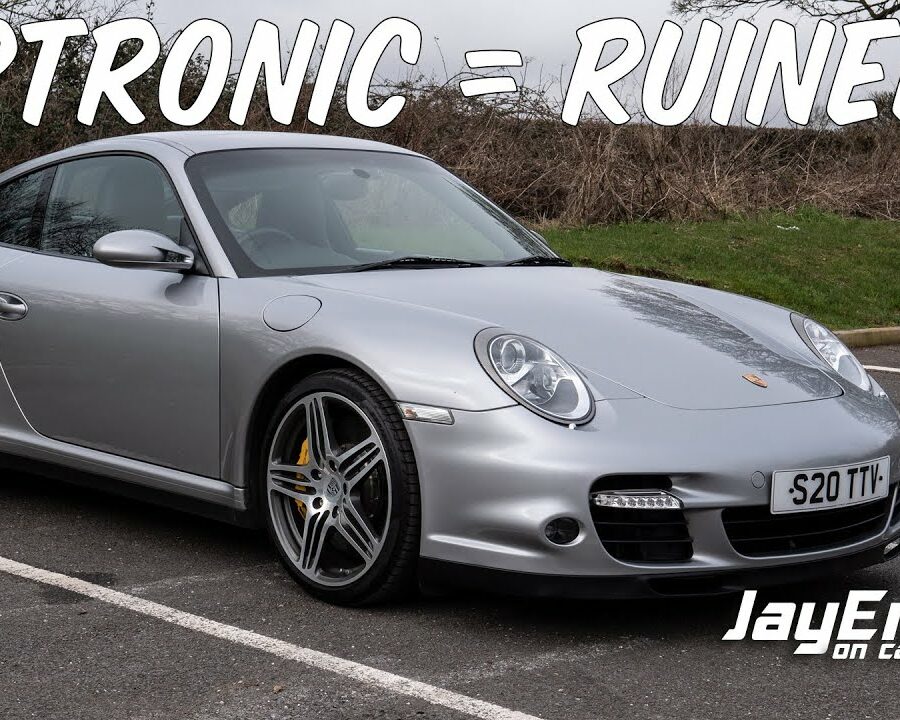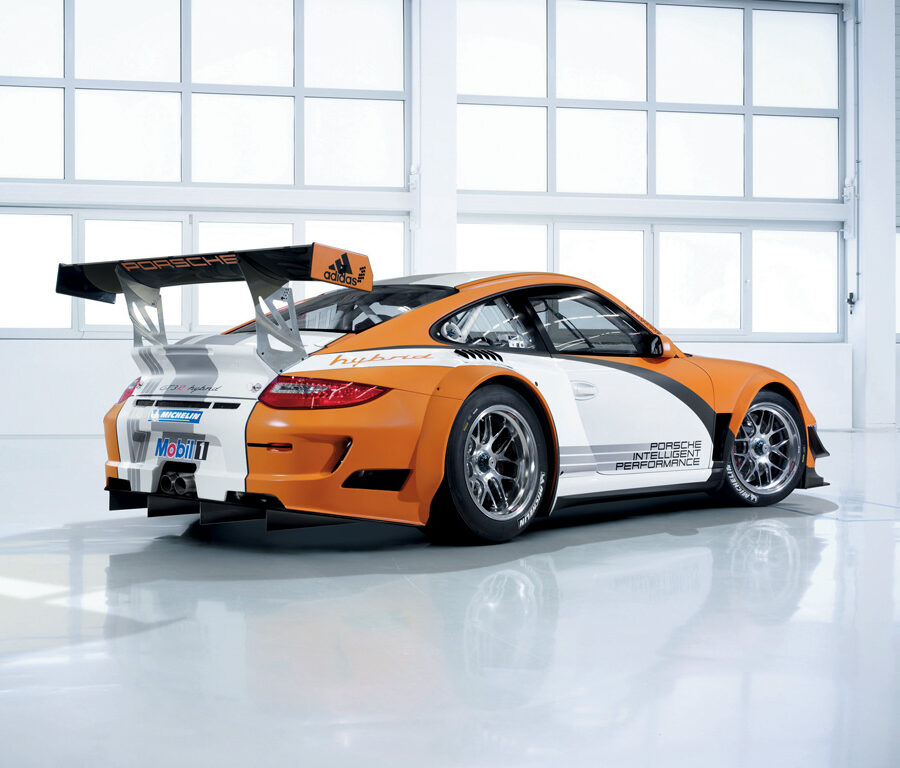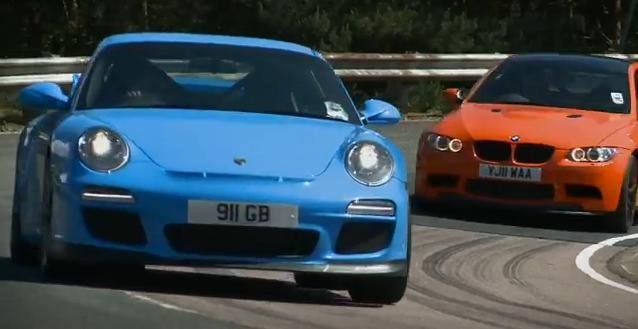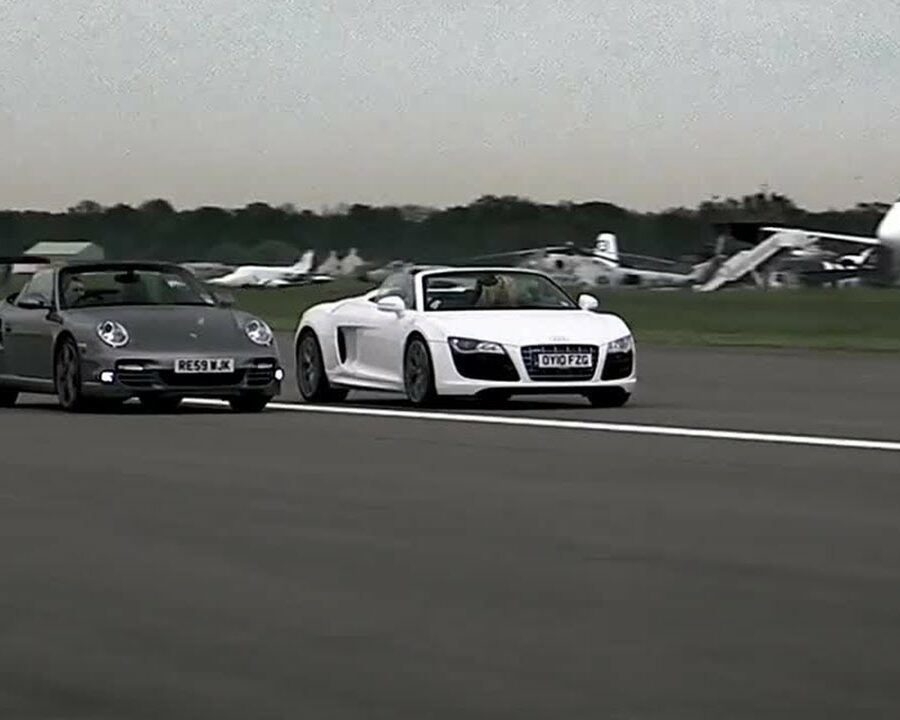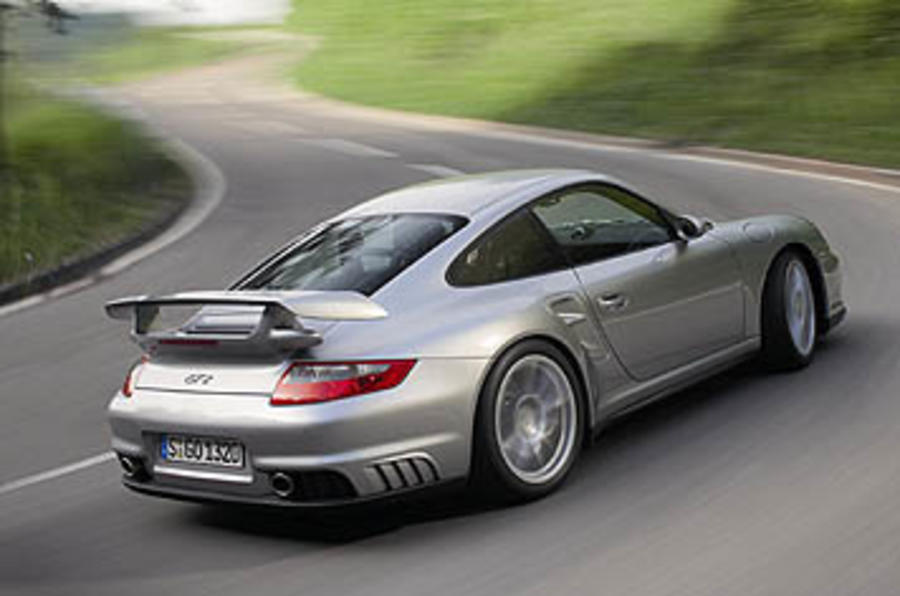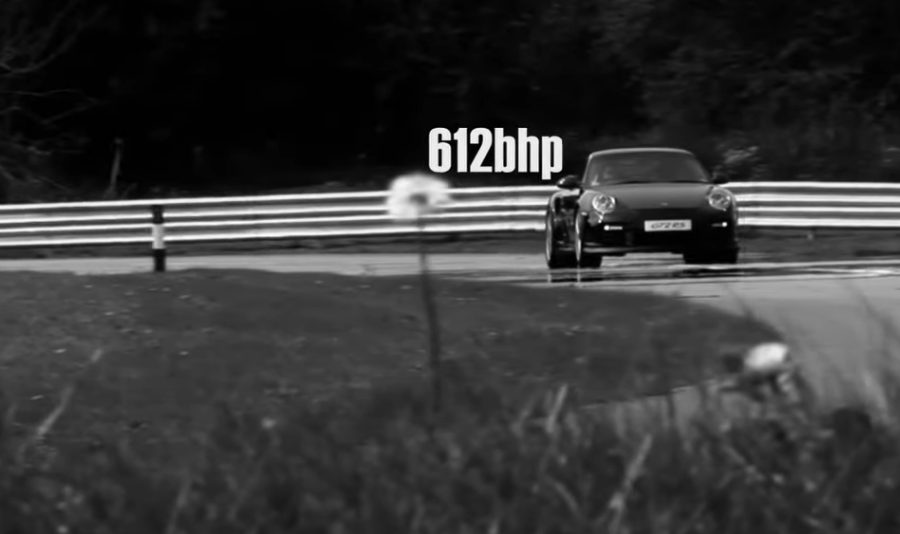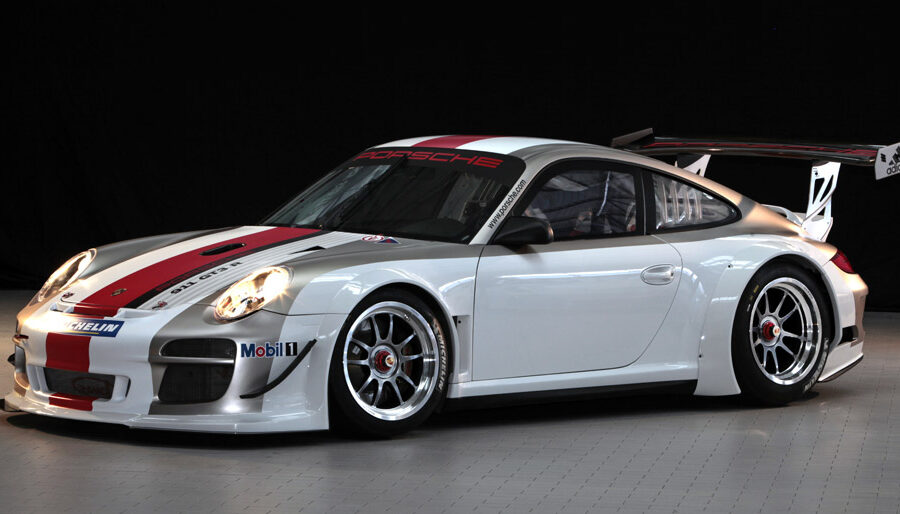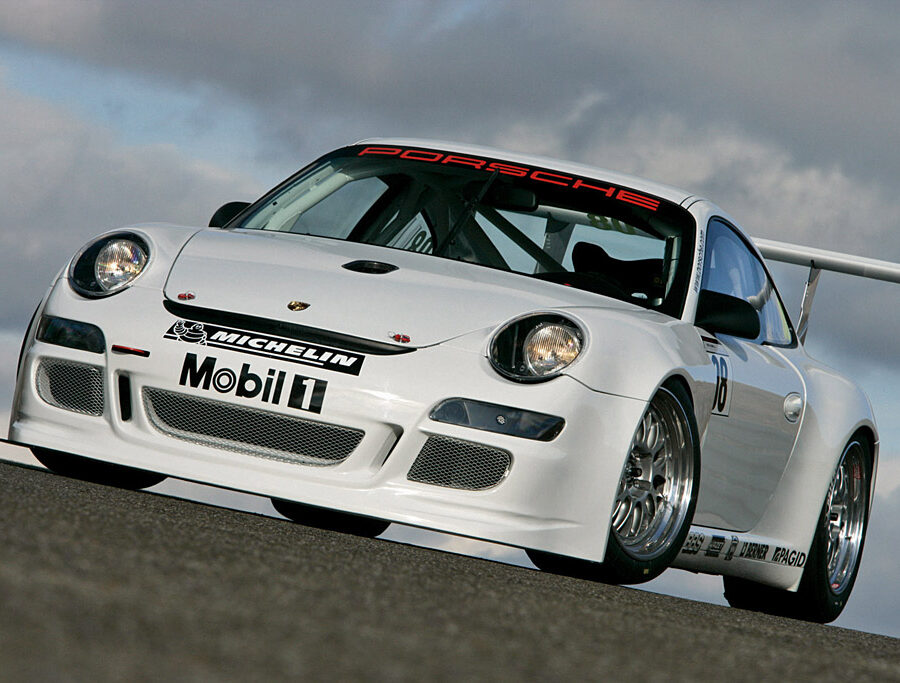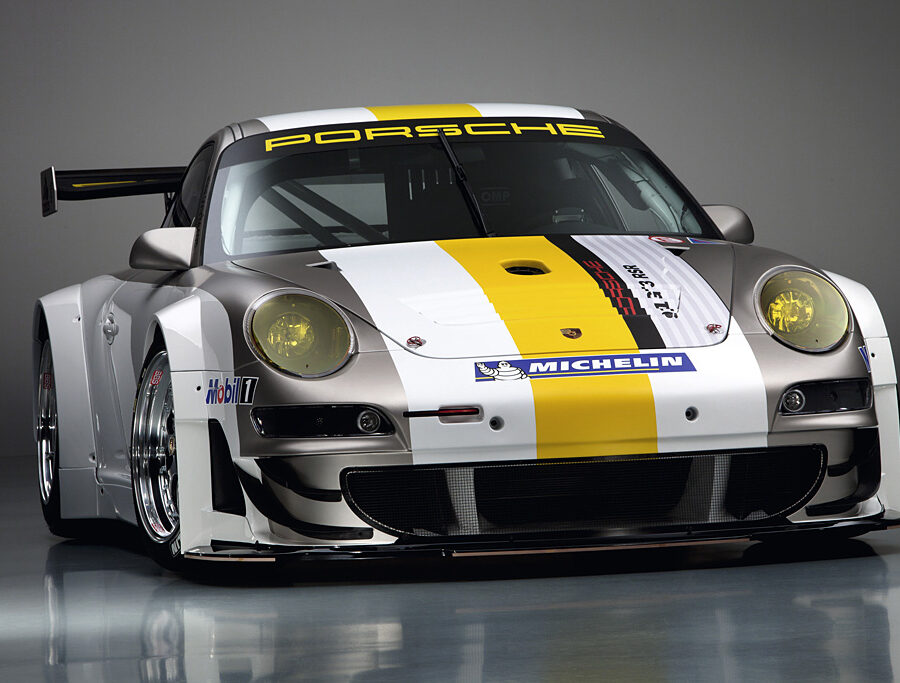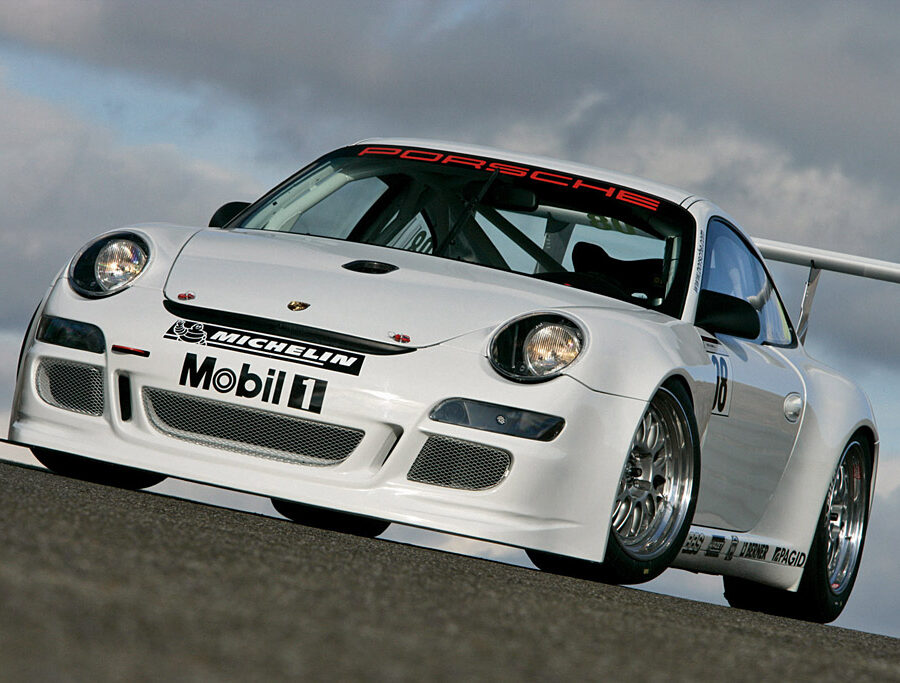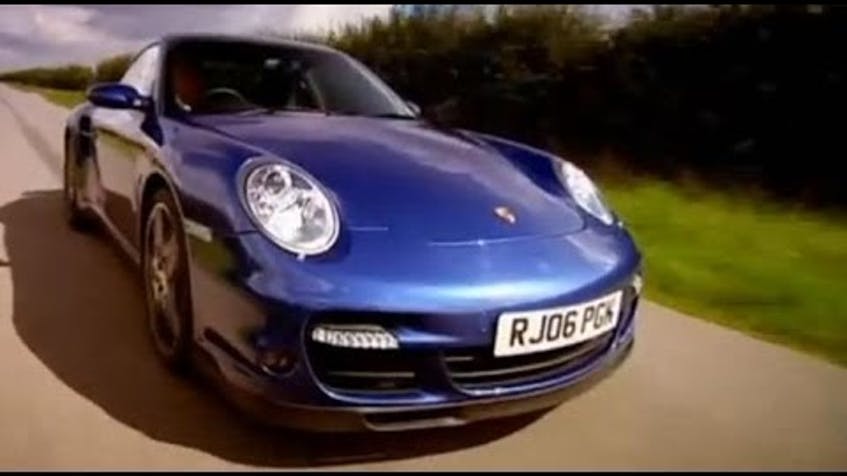Porsche 911 (997)
On May 7, 2004, Porsche announced that the new 911 generation will come as a 2005 model, as a successor to the 996 model. The 997 ended up being the most commercially successful 911 of all time, selling over 200,000 units during its production run. It marked the return to the classic 911 styling after the 996’s “fried egg” look. Today many consider it the quintessential 911 design and the last of the pure 911 sports cars. Some 45 iterations of road cars in total were made but the 997’s significance should not be measured purely on its commercial success. This was a milestone car for successfully introducing the dual clutch PDK transmission to Porsche’s 911, and also Porsche’s now ubiquitous and ingenious active suspension management or ‘PASM’. The 997 represented a significant relaunch of the 911 that included a major body restyling and interior update, while using much of the rolling chassis of the outgoing 996. At launch there were two uprated versions of the water cooled Carrera engines – the Carrera 3.6 and the Carrera S 3.8. See all of our Porsche 997 Research.
Porsche 911 Carrera GTS Coupe (997) (2011 – 2012)
It's faster, more powerful and better looking than any other model in the Carrera family.
Porsche 911 Turbo S Coupe (997) (2011 – 2013)
An exclusive high-performance athlete
Porsche 911 Speedster (997) (2011)
Very low-slung, very sporty, and very rare
Porsche 911 GT3 RS 4.0 (997) (2011)
Probably the best Porsche 911 ever made. Yes, it is that good.
Porsche 911 GT2 RS (997) (2011)
The power: 620 hp. The weight: 3,021 lb. The Nürburgring Time: 7 min, 18 sec. The verdict: Beast
Porsche 911 GT3 RS (997.2) (2010 – 2012)
This most-special 911 will continues the RS tradition. Lighter, faster, and more extreme.
Porsche 911 GT3 (997.2) (2010 – 2012)
The new GT3 even more powerful, faster, and refined than its predecessor
Porsche 911 Sport Classic (997) (2010)
Double-dome roof. Retro-styled Fuchs wheels. Ducktail spoiler. YES PLEASE.
Porsche 911 GT2 (997) (2008 – 2009)
It was the most powerful and fastest roadgoing 911 Porsche ever created
Porsche 911 GT3 RS (997) (2007 – 2008)
An even lighter and more race-focused version of the 911 than the "standard" 911 GT3
Porsche 911 GT3 (997) (2007 – 2009)
The race-bred 911 features a 415-horsepower naturally aspirated engine with an 8,400 rpm redline
Porsche 911 Carrera S Club Coupe (997) (2006)
Limited-edition run of 50 built to celebrate the 50th anniversary of the Porsche Club of America
Porsche 911 Targa 4S (997.2) (2009 – 2012)
All the fun of a convertible without sacrificing the dynamic abilities of a hardtop.
Porsche 911 Targa 4 (997.2) (2009 – 2012)
Glass-roofed variant gets an update along with the rest of the Porsche 997 range
Porsche 911 Carrera 4S Cabriolet (997.2) (2009 – 2012)
Larger, more potent six-cylinder engine. New, all-wheel-drive system from the 911 Turbo.
Porsche 911 Carrera 4S Coupe (997.2) (2009 – 2012)
The all-wheel-drive, high-performance variant Carrera 4S Is the perfect all-season 911
Porsche 911 Carrera 4 Cabriolet (997.2) (2009 – 2012)
New engine. New all-wheel drive system. Refreshed design.
Porsche 911 Carrera 4 Coupe (997.2) (2009 – 2012)
Refreshed Carrera 4 lose the old multi-plate, viscous all-wheel-drive system in favor of the electronically controlled system
Porsche 911 Carrera S Cabriolet (997.2) (2009 – 2012)
Like the rest of the range the Carrera S Cabriolet got a new 997.2 generation update.
Porsche 911 Carrera S Coupe (997.2) (2009 – 2012)
Faster, edgier, sexier, better-equipped and more expensive, but it’s also cleaner, greener, more efficient
Porsche 911 Carrera Cabriolet (997.2) (2009 – 2012)
The 911 Carrera Cabriolet is a true Porsche, from top to bottom.
Porsche 911 Carrera Coupe (997.2) (2009 – 2012)
Now with direct-injection technology and a seven-speed, dual-clutch transmission
Porsche 911 Targa 4S (997) (2007 – 2008)
Softer spring rates than the coupe. More leather in the cabin and better equipment. All-wheel drive security.
Porsche 911 Targa 4 (997) (2007 – 2008)
A Practical 911 With Strong Performance to Match
Porsche 911 Turbo Coupe (997) (2007 – 2009)
473 bhp! 460 ft lbs! 3.6 second 0-60! The Ultimate Super-GT
Porsche 911 Carrera 4S Cabriolet (997) (2006 – 2008)
The Four Seasons 911
Porsche 911 Carrera 4S Coupe (997) (2006 – 2008)
3.8-liter engine producing 350 bhp makes this the all-weather 911 king
Porsche 911 Carrera 4 Cabriolet (997) (2006 – 2008)
All-wheel drive, all-weather fun.
Porsche 911 Carrera 4 Coupe (997) (2006 – 2008)
All-weather stability and safety with a new killer stance
Porsche 911 Carrera S Cabriolet (997) (2005 – 2008)
Makes a strong case against its coupe sibling
Porsche 911 Carrera S Coupe (997) (2005 – 2008)
Fun, Fast & Worth the Extra Money Over the Base Model
Porsche 911 Carrera Cabriolet (997) (2005 – 2008)
The drop-top gives up little performance or structural integrity compared with the coupe version
Porsche 911 Carrera (997) (2005 – 2008)
Better looks. More power. More tech.
Porsche 911 GT3 R Hybrid (2010)
This hybrid is unlike anything you've previously heard called a hybrid.


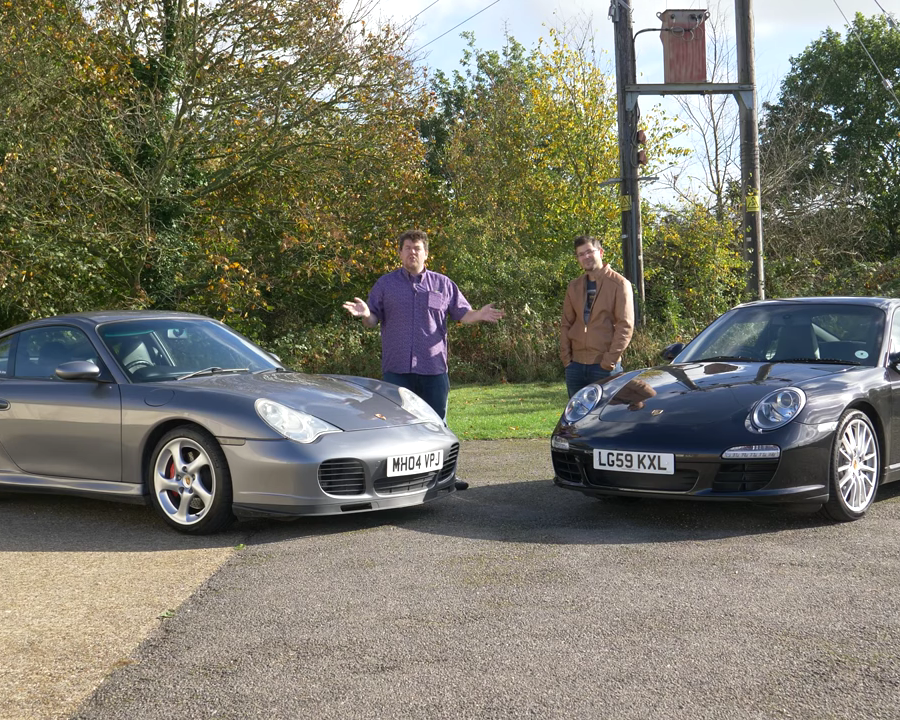

![Porsche 997 GT3 RS - ORGASMIC SOUND [CHASING PORSCHE 996 GT3] RAW POV](https://dev.stuttcars.com/wp-content/uploads/2018/06/Porsche-997-GT3-RS-ORGASMIC-SOUND-CHASING-PORSCHE-996-GT3-RAW-POV--900x720.jpeg)
